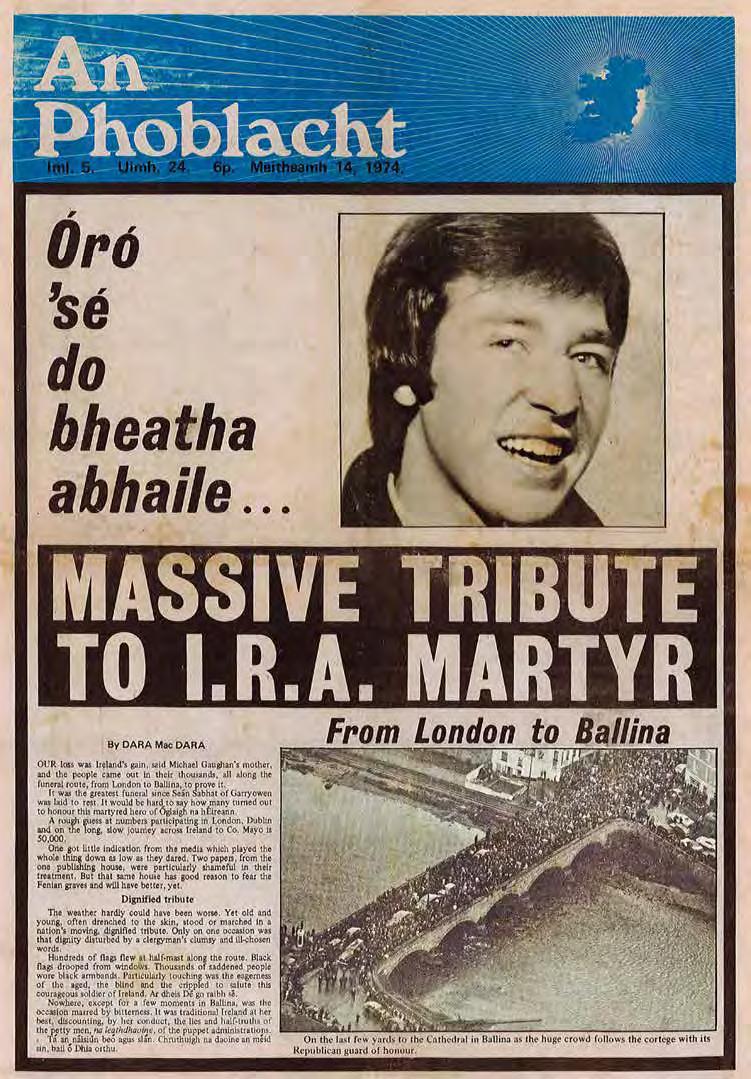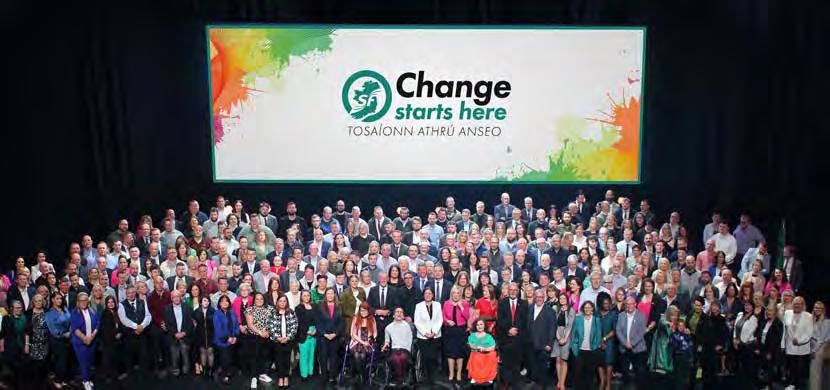

CHANGE STARTS HERE TOSAÍONN ATHRÚ ANSEO
Voting
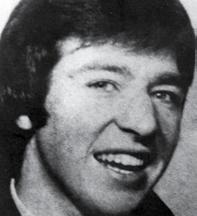
SINN FÉIN PRESIDENT MARY LOU McDONALD
MICHAEL GAUGHAN'S
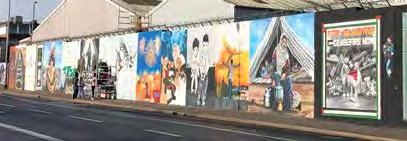
MICHAEL GAUGHAN Volunteer from death, after 65 Britain abandoning This is his story.
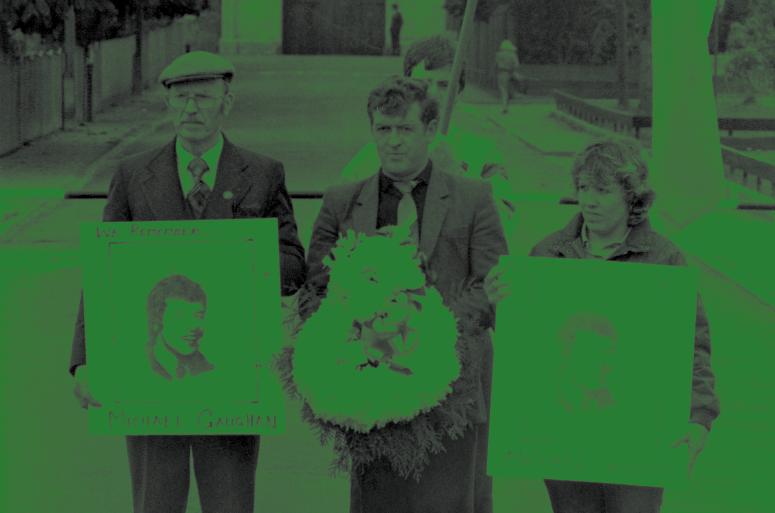
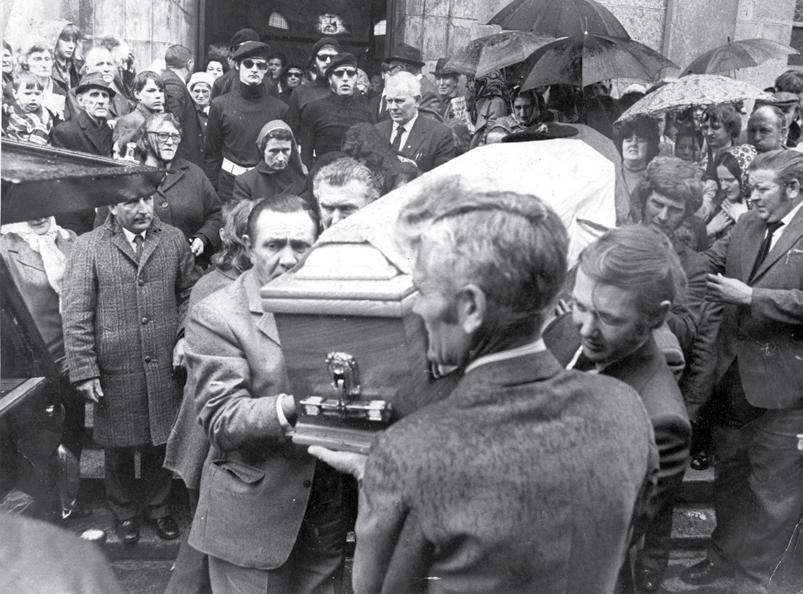
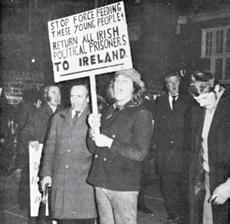
Fifty years ago in an English prison a young Irish Republican from County Mayo died after being brutally force-fed while on hunger strike. He was protesting for his rights and those of his comrades as political prisoners. His name was Michael Gaughan and this book tells his story. that my demands of my my behalf but New Ireland for is to the IRA work and Michael Gaughan Irish Sea; I roamed so free. body lie; Irish sky.



AN PHOBLACHT
is published by Sinn Féin. The views in An Phoblacht are those of the authors and do not necessarily reflect the views of Sinn Féin. We welcome articles, opinions and photographs from new contributors but contact the Editor first.
EDITOR: ROBBIE SMYTH
An Phoblacht, Kevin Barry House, 44 Parnell Square, Dublin 1, Ireland.
TELEPHONE: (+353 1) 872 6 100.
EMAIL: editor@anphoblacht.com
PRODUCTION:
MARK DAWSON
RUAIRÍ DOYLE
MÍCHEÁL Mac DONNCHA
www.anphoblacht.com
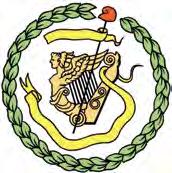
EQUALITY
IT I S NEW STRUNG AND SHALLBE DRAEH
CONTRIBUTORS
Kathleen Funchion 10
Maria Doherty 11
Kevin O’Hara 13
Mícheál Mac Donncha 16 & 41
John Finucane 20
Feargal Ó Diarmada 22
Ciarán Dawson 24
Jim Gibney 28
Igor Zulaika Zurimendi 33
Joe Dwyer 35
Tom Hartley 43
Emma McArdle 45
Maeve Arbuckle 47
Bernadette Colgan 49
Denzil McDaniel 51
anphoblacht contents clár
UIMHIR
EISIÚNA 2 - 2024 - ISSUE NUMBER 2
Two Tragedies
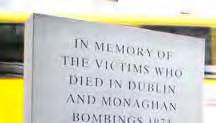
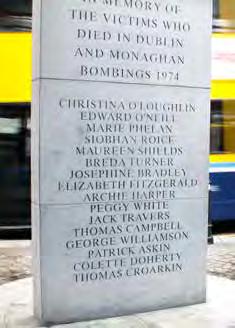
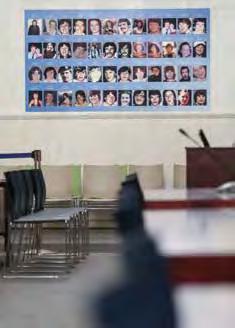
The 1974 Dublin Monaghan bombings and the 1981 Stardust tragedy were both seismic events in the last half century. In both cases the political establishment behaved shamefully and frustrated the search for truth by the survivors and the bereaved of these tragedies.
A life in struggle 1916’s forgotten rebels
28 16 47
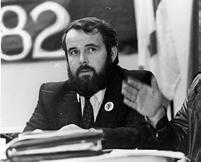
Francie Molloy joined the Republican Clubs as a teenager in 1967, beginning a decades long odyssey as a frontline political activist. He has been a civil rights campaigner, a Sinn Féin councilor, MLA and MP for Mid-Ulster. With the announcement of his retirement at the next Westminster election we asked JIM GIBNEY to interview Francie on his remarkable political life.
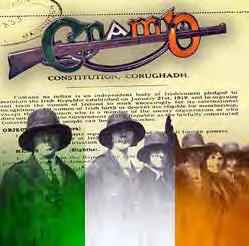
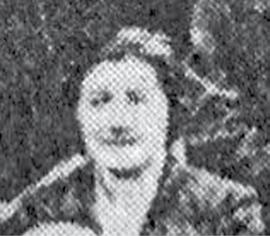
Julia Morrissey played a key role in revolutionary politics in Galway, yet little is known about her unique contribution to republican struggle. EMMA ARBUCKLE asks why?
EDITORIAL
anphoblacht
EAGARFHOCAL
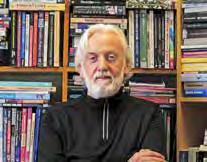
ROBBIE SMYTH editor@anphoblacht.com
A vote for Sinn Féin
Avote for Sinn Féin is a declaration that the current coalition government have failed, and that there needs to be a Leinster House election. It is a vote for representatives driven by the commitments of the 1916 Proclamation and the 1919 Democratic Programme of the First Dáil.
It is a vote for effective representation on the ground in your community, for engaged councillors who will be the frontline in the fight to turn around the failed polices of 13 years of Fine Gael in government and four years of a coalition with Fianna Fáil and the Green Party that has seriously worsened the range of problems facing Irish society.
Sunningdale masqueraded as a step to peace on the island, but in fact endorsed the continuation of interment, closed border roads, and the proscription of Sinn Féin. There would also be no reform of the RUC and British troops would remain on Irish streets
It is a vote for MEPs who represent Irish interests fairly and equitably in a rapidly changing Europe. It is a vote against EU militarisation. It is a vote for representatives who will stand up for Irish farmers and fisheries and work for a just transition on the policies that need to be implemented to tackle the climate emergency.
It is a vote for representatives who will not repeat the failures of government that have led to the delays in justice for the Stardust families or the families of the victims of the Dublin Monaghan bombings.
This edition of An Phoblacht faces forward into the coming EU and local elections, while also tracking back to key moments in the last 50 years, including the death of Volunteer Michael McGaughan on hunger strike in 1974 and the already mentioned Dublin Monaghan bombings of the same year. It also celebrates the decades of political struggle by retiring MP Francie Molloy.
With hindsight, 1974 was a key year in the decades of republican struggle. The Fine Gael/Labour coalition response to the Dublin Monaghan bombings was one aspect of this. The prison regime that ordered the force feeding of Michael McGaughan that caused his death is another. What links them is the failure of a political establishment in London and Dublin to accept the need for systemic reform and respect for all in society.
It was the same thinking that led to the Sunningdale Agreement and the Assembly it created that collapsed in May 1974. Sunningdale masqueraded as a step to peace on the island, but in fact endorsed the continuation of interment, closed border roads, and the proscription of Sinn Féin. There would also be no reform of the RUC and British troops would remain on Irish streets.
A vote for Sinn Féin is a recognition of the learning from these past failures and the need now for a politics that is inclusive and rooted in a commitment to social justice and equality.
Vote Sinn Féin on 7 June.
TOSAÍONN ATHRÚ ANSEO Change starts here

The launch of Sinn Féin’s candidates for the upcoming local, EU and Mayoral elections was held on 28 April in Dublin’s Helix theatre. The sunny day was in sync with the mood of the hundreds of Sinn Féin candidates and supporters who attended the event.
We cover the keynote address of MARY LOU McDONALD, along with reports from the canvass provided by EU candidate KATHLEEN FUNCHION who is running in Ireland South, MARIA DOHERTY on the election trail from Milford, Donegal, and KEVIN O’HARA who is running in Conamara South, Galway.
THE FIRST STEP TO GETTING THIS DISASTROUS GOVERNMENT OUT OF OFFICE
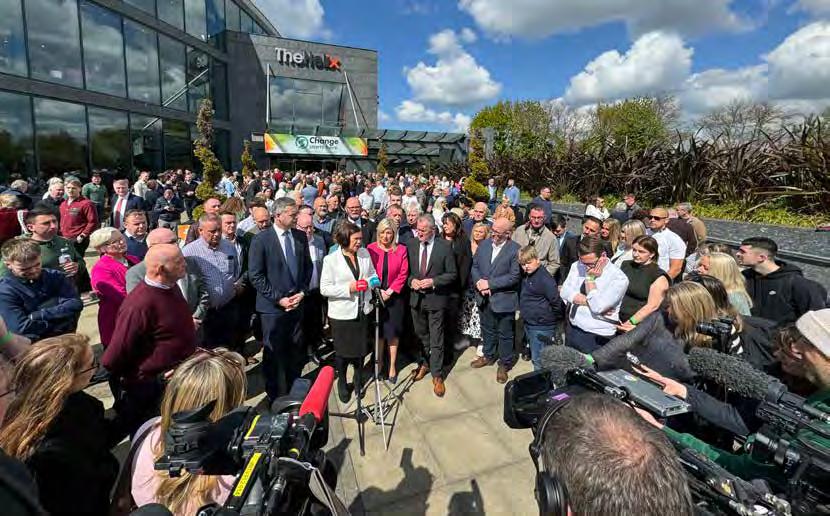
Change starts here
The campaign launch marked the largest ever number of election candidates fielded by Sinn Féin. Party President Mary Lou McDonald told the meeting that, “The number of candidates that Sinn Féin are running in the local elections is testament to our ambition to deliver change in each and every LEA across the state and to have representatives on every council after the local elections on June 7”.
Mary Lou joked with the audience that, since the 2020 Leinster House election, she had been inundated with advice on running enough candidates. She said, “People stopped me in the street, at matches, concerts, shouted it to me from car windows, stopped me in the supermarket. I couldn’t buy a sliced pan without someone saying it to me. So, to you all I now present Sinn Féin’s record number of candidates.”
Turning to the serious work that Sinn Fein councillors will take on, McDonald said, “We want councils to deliver for communities on housing, on planning and on delivering better local services”.
She said that, “I am very proud of all those candidates who are going forward to stand for Sinn Féin in this election. Leaders in their own community they bring with them a wealth of experience and a real commitment to deliver change for communities. We have many first-time candidates, including teachers, carers, community workers, young people going forward driven by the desire to make change happen.”
'We are the party of change... Change that means safe communities, strong communities built from the grassroots up... a government, a society that has the backs of ordinary people'
SINN FÉIN PRESIDENT
MARY LOU McDONALD
McDonald said that, “We are determined to elect the strongest possible team of Sinn Féin councillors to work with a Sinn Féin led government after the next general election delivering the largest social and affordable home building programme in the history of the state.
“We are running a strong team of candidates in the European election who bring formidable track records on working hard to deliver change. Maurice Quinlivan is contesting the Limerick Mayoral election to be a voice for all the people of Limerick and unlock the potential for the city and county to thrive.
“Voting for Sinn Féin in this election is the first step to getting this disastrous government out of office. What we are saying to people clearly is change starts with the local and European elections. If you want change, vote for it in the European elections, in the local elections and in the General Election when it comes.
“We are the party of change. Change that means a roof over your head, a secure affordable home. Change that means being able to see a doctor when you are sick, getting the right care, in the right place, at the right time. A future where life is affordable, where a job provides a decent living, and when you can retire at 65 with your pension. Change that means safe communities, strong communities built from the grassroots up. Sinn Féin wants a government, a society that has the backs of ordinary people.”
TOSAÍONN ATHRÚ ANSEO
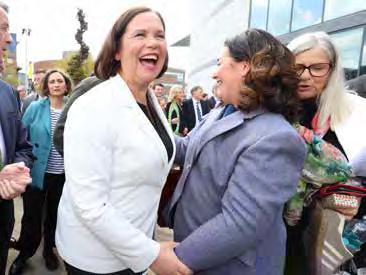
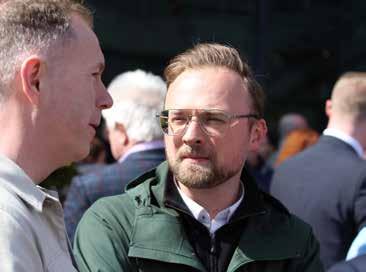
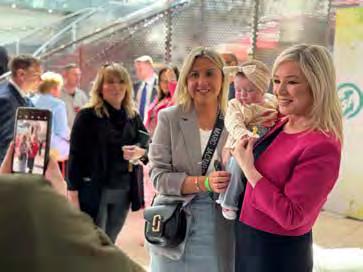

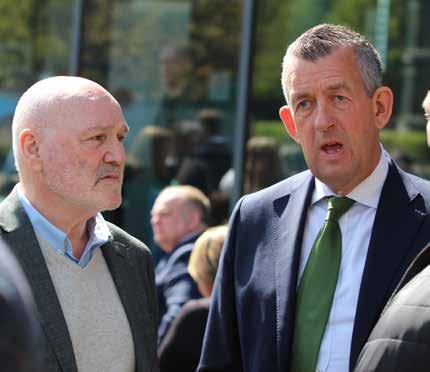
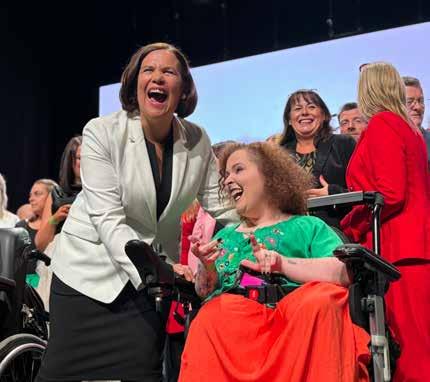
Blúiríní Beaga Gaeilge –Little nuggets of Gaeilge
Éire Aontaithe – A united Ireland
As part of our ongoing commitment to enhance Irish language use, we are including these Blúiríní Beaga Gaeilge – Little nuggets of Gaeilge. In this issue, we have articles about elections and a united Ireland. This issue’s nuggets offer some key phrases as Gaeilge that readers could substitute in conversation instead of the usual English. See how you go.
Use the nathanna cainte below to encourage your comrádaithe/ comrades as we struggle on for a united Ireland.
Beir bua! – /behr boo-ah/ - Seize victory!
Mo cheol thú! - /muh khyole hoo/ - Bravo! (lit. ‘you are my music’)
Fan inti! - /fohn ihn-tee/ - Keep going!
Dearna leat! - /dahr-neh lyaht/ - More power to you!
Ardfhear | Ardbhean! - /awrd-ahr/ | /awrd-van/ - Good man/ good woman!
• Mary Lou McDonald and Maria Doherty – SEE PAGE 11
• Alex Maskey and Limerick Mayor candidate Maurice Quinlivan
• Mary Lou and Maureen Pigott candidate in Kinnegad LEA
• Chris Hazzard and Cllr Dan Céitinn candidate in Dublin South-East Inner City LEA
• Amy Farrell candidate in Dublin CabraGlasnevin LEA with Michelle O'Neill
• Danielle O’Shea candidate in Limerick City East LEA
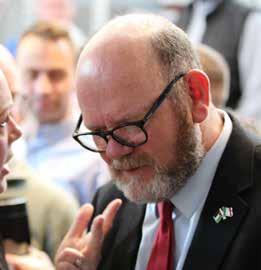
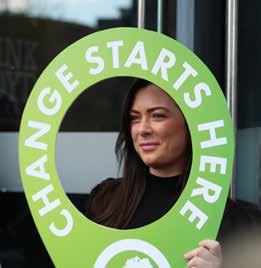

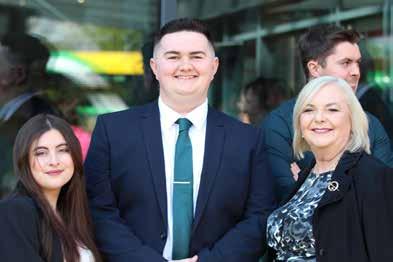

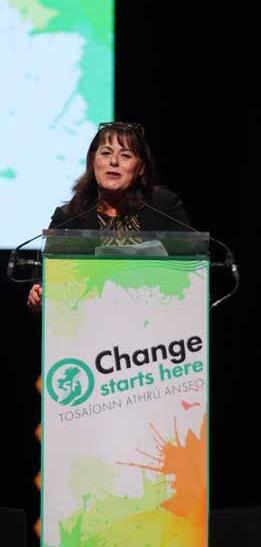
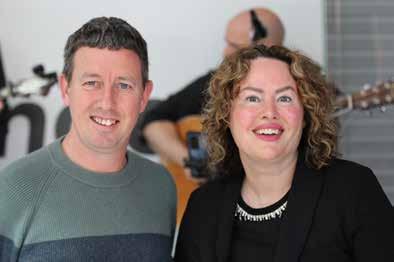

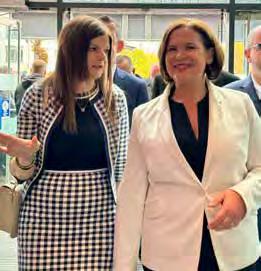
• Cllr Daithí Doolan, Dublin EU and Ballyfermot - Drimnagh LEA candidate
• Fiona Regan, Waterford, Dungarvan LEA
• Mary Lou meets Toni Devine candidate in Donegal County Council - Carndonagh
• Dublin City Council candidates Alyssa Ní Bhroin (Clontarf), Josh O’Rourke and Olive Sloan (Artane-Whitehall)
• Michelle Gildernew, EU candidate for Midlands–North-West at the launch
• Chris MacManus, EU candidate for Midlands–North-West
• Kathleen Funchion, EU candidate for South with Mary Lou McDonald – SEE PAGE 10
• Alana Hutchinson Smith, Waterford City West LEA
• Shaun Tracey and Amanda Spiteri, Dún LaoghaireRathdown County Council, Glencullen - Sandyford LEA

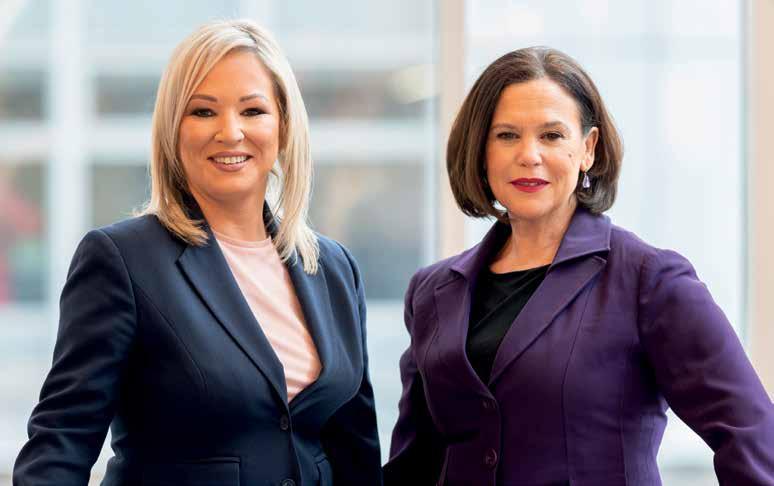
KATHLEEN FUNCHION

I
will work to ensure the EU is once again a voice for peace, for human rights, and is proactive on Irish Unity
A TIME OF HUGE POTENTIAL AND OPPORTUNITY FOR IRELAND
These elections are taking place at a time when Ireland is facing many challenges; a persistent housing crisis, a health service at breaking point, and a cost of living crisis. These elections are an opportunity for people to have their say on the change they want to see in their local community, throughout Ireland, and in Europe.
We have a government that is out of touch, that doesn’t understand the challenges ordinary people are facing, lacks the vision and capacity to address them, and won’t stand up to the European Union when needed.
I am passionate about sorting out the housing crisis, standing up for communities, and addressing the climate crisis in a way that is fair and supports people who want to play their part, rather than punishing them.
I am running in this election because I want to ensure the EU gets back to focusing on the things that matter to ordinary workers and families; the cost of living crisis, improving workers’ wages and conditions, and supporting, rather than hindering member states in addressing issues like the CAP, the future of family farms and fishing rights.
We need to send strong candidates to Europe who will protect Ireland’s voice and position, ending Ursula von der Leyen’s damaging leadership of the EU, and opposing the EU’s dangerous drift towards militarisation while defending Irish Neutrality.
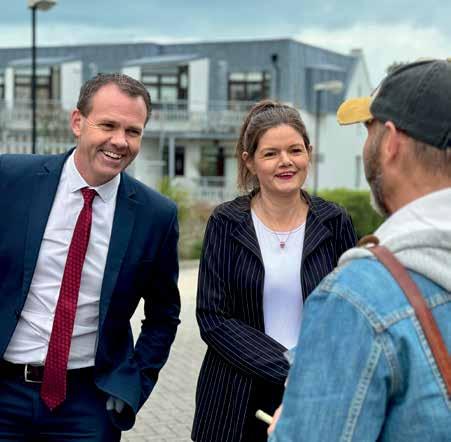
Ireland needs MEPs that put our fishing and farming industry back at the centre of EU negotiations, who don’t roll over when others attempt to weaken our voice or remove our veto on Foreign Affairs and Defence.
I will work to ensure the EU is once again a voice for peace, for human rights, and is proactive on Irish Unity. This is a time of huge potential and opportunity for Ireland, a time of change. If you want change however, you have to vote for it in the local and European elections and in the General Election when it comes.
As a Sinn Féin elected representative for 15 years serving as councillor, TD and Oireachtas Committee Chair. As a mother
of two and a former trade Union organiser, I feel I have the experience that is needed to ensure strong representation with the correct political values. I have always championed workers’ rights and prioritised our children’s futures.
We need representatives in Europe who are not afraid to put Irish interests first, who will work tirelessly to champion local communities and deliver the change that we need. Change starts on 7 June 7 with the European and local elections.
That means voting for Sinn Féin. Beidh guth láidir ag Kathleen ar son na hÉireann i bParlaimint na hEorpa. Vótáil Sinn Féin.
TOSAÍONN ATHRÚ ANSEO Change starts here
• Kathleen with Sinn Féin TD John Brady, canvassing in Wicklow
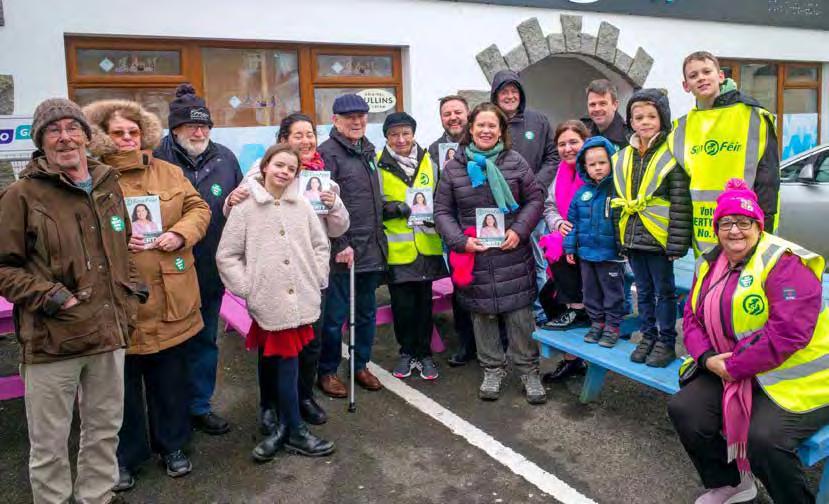
A FAIRER AND STRONGER IRELAND STARTS HERE
I have had the honour of being selected to run for Sinn Féin in the Milford LEA, north Donegal. I stood in the 2019 election as a first time candidate and unfortunately did not get elected on that occasion.
Undeterred, I have got more involved in my local community over the past five years, serving on boards of the local community development organisation, family resource centre, secondary school and Irish language organisation and got to see firsthand the amount of work being done and also the absolute need for more investment in rural Ireland.
I also have worked over the past five years with our local councillor Gerry Mac Monagle in Letterkenny and Pádraig Mac Lochlainn TD, making representations on behalf of constituents in the Milford Local Electoral Area. We canvassed continually over the last five years and have held a number of public meetings in each of our local areas to hear first-hand what the issues and concerns are in the community.
By far, one of the single biggest issues facing the community is housing. With no houses to buy, to rent, to live in, it is having a huge effect on our community, and we also have the crisis that is the defective blocks

BY MARIA DOHERTY
issues in thousands of homes across this consistency and the county.
So after what seems like a flash, here we are again on the campaign trail in the villages and townlands of north Donegal. I really enjoy canvassing and chatting to people and in particular rural canvasses as people are so warm and engaging.
I live in such a beautiful part of Donegal that the canvass will lead you in to what I call hidden parishes. One day you are in the mountains, navigating sheep on a farm, the next day on the beach front as we are a coastal community. It is such a treasure to discover all these hidden gems in my own community, and with our spectacular weather, which means lots of rain, it really never disappoints.
It is always such an honour for people to speak to you on their door step, or in their farm yard and invite you into their home
It is always such an honour for people to speak to you on their door step or in their farm yard and invite you into their home to tell your their thoughts or share with you an issue they may have and really for me that is what it is about.
That is why I am a Sinn Féin candidate and have been a representative for the past five years, as I want to support them, the good
• Na Dunaibh le Mary Lou
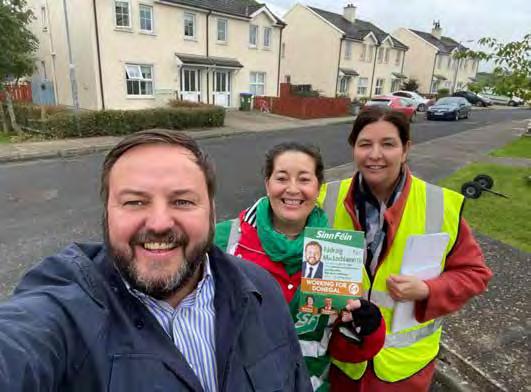
and ordinary people of my community. I want to make their lives a little easier. I want to ensure that they get what they deserve and that I can with my Sinn Féin colleagues
be an advocate for them. In essence, I firmly believe that our communities will be better off by electing a Sinn Féin candidate. I am also part of a very large team of
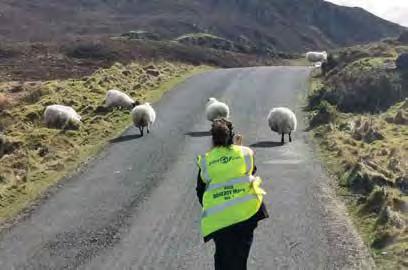
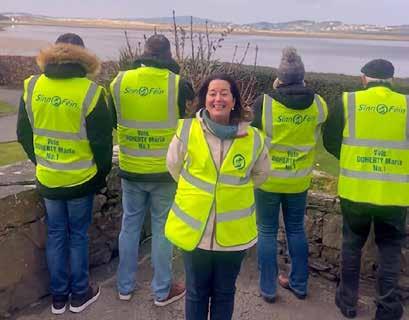
candidates in Donegal standing in this year’s local election. We are standing 18 candidates. Presently, we have 10 councillors on Donegal County Council out of 37.
Local Government is hugely important as it is your first layer in a democracy and it is very connected with local communities. Therefore, having a strong Sinn Féin team of councillors is in my view one of the basic principles of having good and decent representation.
I want to be part of a team of councillors that are an effective voice for change and an advocate for providing rural communities and in particular our Gaeltacht communities in which I live in with opportunities to develop and prosper with the same economic possibilities as the rest of the country.
With just weeks to go now until 7 June, it is getting very real and exciting and each and every canvass gives us an opportunity to engage with the community and let them know that there is an alternative and that we can build a better and fairer and stronger Ireland and that it starts right here in their own community by giving SF a chance in the local elections.

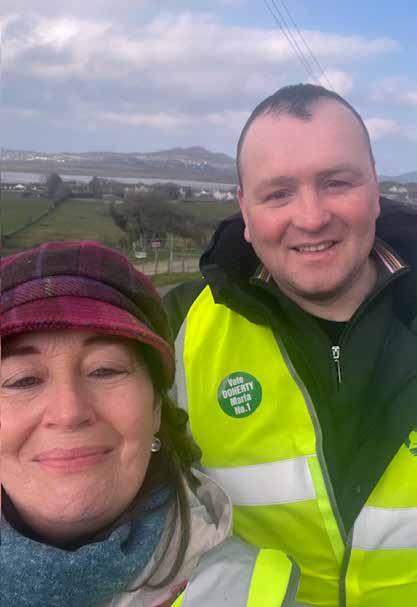
• Vote Maria No. I
• On the Canvass Trail
• Carrigart canvass with Kate and Pádraig
• Lough Salt Sheep

BY KEVIN O’HARA
HELPING PEOPLE AND COMMUNITIES ON THE GROUND
I’m writing this on the ferry on the way to Árainn, Inis Mór which along with the other Aran islands comprise the offshore component of the South Conamara LEA. The LEA covers a varied area; stretching west from the boundary with Galway City all the way to Ceann Gólaim in Leitir Mealláin and curving south to include the Aran islands at the mouth of Galway Bay.
As you can imagine the main issues being raised by people as we canvass are the same as everywhere else: housing, health, transport and the cost of living. Magnified in some cases by a fear that government mishandling of immigration will put further strain on the broken system and that the poor provision of services will deteriorate further.
All of the LEA is in the Gaeltacht and that adds an extra element to the housing crisis locally, as the difficulty in finding homes and accommodation makes it harder for the next generation of Irish speakers to settle down in the area.
There is a bitterness here, a belief that the State has no real interest in Conamara except to use it in tourism advertisements and to pay lip service to the Gaeltacht and to the Irish language.
I grew up in An Spidéal, moving there when I was twelve and at this stage 26 years on, in the tradition of rural Ireland almost a local but never quite. While I have always had a deep interest in republican politics I never thought that I would stand for election, but when a candidate was needed for the 2019 local election, I put my hand up.
For me the 2019 local election campaign was an unsuccessful and rather bruising experience but following that we set about rebuilding locally with an eye on preparing for 2024.
One of the main events to happen in the intervening period was the election of Galway West’s first Sinn Féin TD in almost 100 years. Having Mairéad as an elected TD in the area brought a level of support and access and has really helped to build the Sinn Féin profile in the area.
One of the most positive experiences I have had to date was very simple, somebody whom I had helped to apply for a warmer homes grant rang to thank me – the work had been carried out and he was delighted with the improvement to the house.
Something very simple, helping somebody to fill a form that helped them in a very real way. That to me is one of the reasons I am standing for election, to be able to assist people locally at a personal and a community level. The system can be very hard to navigate and it is important that local people and communities have a voice to represent and to advocate for them.
To me as a republican, helping people and communities is what it is about, by doing so on the ground, you are in a small way helping
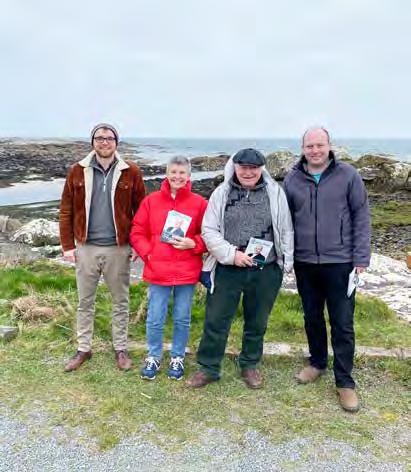
Change starts here
TOSAÍONN ATHRÚ ANSEO
• Kevin O'Hara with his canvas team on Inis Mór
to make Irish society a little bit fairer and contributing to a Sinn Féin team that will hopefully in the future be in a position to bring real change. Ultimately it is only by doing so that we will have the trust and confidence of our communities to advocate for and to deliver a referendum vote for a United Ireland.
At this stage as we near the business end of the local election campaign the work that we have done to build a Sinn Féin team in South Conamara can be seen in the strength and depth of our canvass team. To me it feels like we are nearing the end of a five year campaign, that we have been working on since 2019. I am really enjoying it but win or lose, it is time to see the results.
Kevin O’Hara is the Sinn Féin local election candidate for South Conamara LEA
There is a bitterness here, a belief that the State has no real interest in Conamara except to use it in tourism advertisements and to pay lip service to the Gaeltacht and to the Irish language
Lá mór Gníomhaíochta Ógra Shinn Féin
LE COISTE EAGRAÍOCHTA ÓSF
Tháinig poblachtánaigh óga le chéile Dé Sathairn an 20ú Bealtaine i mBaile Átha Cliath - poblachtánaigh óga ó gach cearn den tír, tiomanta do shaoirse na hÉireann, agus d’fhíorú na Poblachta lenár linn. D’eagraigh ceannaireacht nua Ógra Shinn Féin an Lá Náisiúnta Stráitéise chun fuinneamh a chur insan eagraíocht agus sinn ag atógáil an eagrais ar fud na hÉireann.
Cuireadh tús leis an lá le caint ó urlabhraí tithíochta an pháirtí agus iar-Chathaoirleach Ógra Shinn Féin, Eoin Ó Broin, a labhair linn maidir le cúrsaí tithíochta, agus cúrsaí polaitíochta i gcoitinne. Téann an ghéarchéim tithíochta i bhfeidhm ar an nglúin óg go háirithe - tá costas an lóistín ag dul ó smacht, níl tithíocht ar fáil, agus tá cuid mhór daoine óga ag tabhairt aghaidhe ar an Astráil, ar Shasana agus ar Cheanada.
Leag Eoin a fhís amach don todhchaí, agus an plean a chuirfeadh Sinn Féin i bhfeidhm más é a bheidh mar Aire Tithíochta insan chéad rialtas eile ó dheas. Ina theannta
Mar Ghaeil óga, tuigimid an dualgas ollmhór atá orainn tógáil ar an dul chun cinn a rinne glúin Jim, agus an streachailt seo a bhuachan sna blianta beaga amach romhainn
seo, rinneadh plé ar ról Ógra Shinn Féin sa pháirtí, agus ar na feachtais a eagraíodh nuair a bhí Eoin ina bhall - an feachtas ‘Saoirse’, mar shampla, ar son saoirse do na cimí polaitiúla a bhí fós i ngéibheann tar éis Chomhaontú Aoine an Chéasta.
I ndiaidh an chomhrá spreagúil le hEoin, chualamar ó Jim Gibney ó Choiste Éireann Aontaithe an pháirtí. Tá Jim ina bhall gníomhach de Ghluaiseacht na Poblachta le breis is caoga bliain, agus labhair sé maidir le forbairt na streachailte le linn na tréimhse sin.
Mar Ghaeil óga, tuigimid an dualgas ollmhór atá orainn tógáil ar an dul chun cinn a rinne glúin Jim, agus an streachailt seo a bhuachan sna blianta beaga amach romhainn. Tuigeann Ógra Shinn Féin lár-sprioc ár ngluaiseachta - reifreann a bhaint amach ar Éirinn
Aontaithe, é a bhuachan, agus an Phoblacht a thógáil bunaithe ar aisling Fhorógra na Cásca. Aithníodh insa chomhrá seo ar Éirinn Aontaithe gur gá go mbeadh an
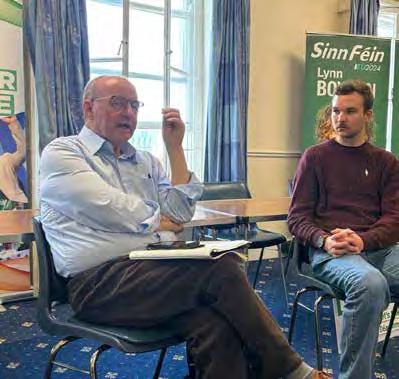
ÓGRA
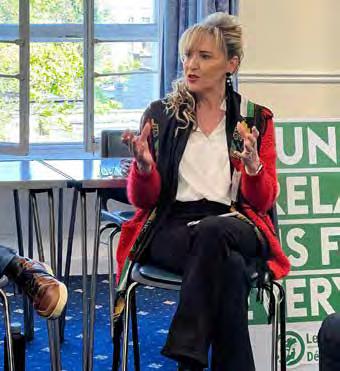

• Jim Gibney
• Martina Anderson

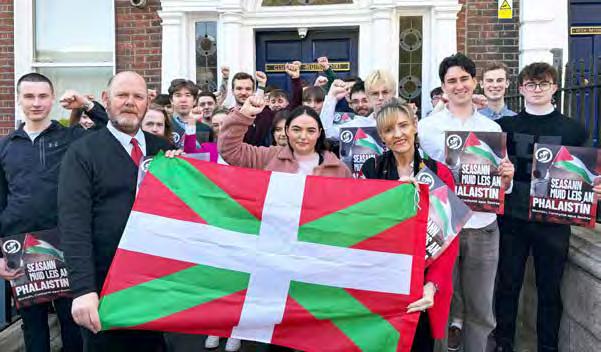
• Dlúthpháirtíocht Ógra leis an bPalaistín agus le Tír na mBascach
Ghaeilge ag croílár na físe seo - i bhfocail an Phiarsaigh, “ní hamháin saor, ach Gaelach. Ní hamháin Gaelach, ach saor.”
Ó thosaigh an slad is déanaí ar mhuintir na Palaistíne mí Dheireadh Fómhair seo caite, tá muintir na hÉireann, agus poblachtánaigh na hÉireann, soiléir inár dtacaíocht don Phalaistín. Tá Ógra Shinn Féin tar éis páirt a ghlacadh i léirsithe agus i bhfeachtais eile.
Seasaimid go daingean le ceart na bPalaistíneach troid in aghaidh fhorghabháil a dtíre agus filleadh ar a dtalamh féin. Sa chomhthéacs sin, bhíomar fíorbhuíoch do Martina Anderson, Ionadaí Shinn Féin chun na hEorpa, as an turas a dhéanamh ó Dhoire chun ceist na dlúthpháirtíochta idirnáisiúnta a phlé linn.
Mhínigh Martina go bhfuil dhá thaobh leis an dlúthpháirtíocht idirnáisiúnta - an tacaíocht a thugaimid do streachailtí éagsúla ar fud an domhain, agus an tacaíocht a fhaighimid dár streachailt féin anseo. Labhair sí faoin turas a thug sí le déanaí ar an gCordastáin, agus ar scéal Abdullah Öcalan atá i ngéibheann le 25 bliain anuas. Mar iarchime poblachtánach, tá Martina fós ag troid ar son
chearta na bpríosúnach polaitiúil ar fud an domhain, bíodh sé sin sa Chordastáin, sa Phalaistín, nó in áit ar bith eile. Agus toghcháin ríthábhachtacha ag druidim linn i Mí an Mheithimh, chualamar ón gComhairleoir Daithí Doolan, atá ag seasamh mar iarrthóir do Pharlaimint na
ÓGRA SHINN FÉIN
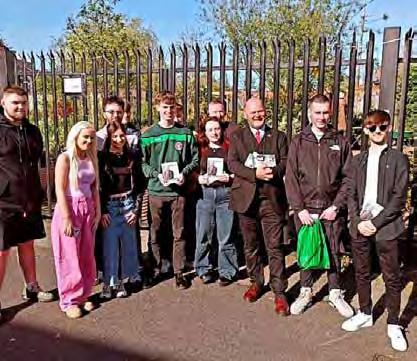
• Baill Ógra ag feachtasaíocht le Daithí Doolan
Léirigh an lá rathúil seo go bhfuil gníomhaithe óga Shinn Féin fuinniúil agus bríomhar, ullamh chun ár seacht ndícheall a dhéanamh ar son na gluaiseachta in 2024
hEorpa i mBaile Átha Cliath. Phléigh Daithí cearta na n-oibrithe, todhchaí na hEorpa, agus an gá go mbeadh Éire nua agus aontaithe ina stát sóisialach, a chuireann leas na cosmhuintire chun cinn.
An bealach is fearr, a dúirt sé, chun dul i ngleic leis an eite fhíordheis ná trí dheiseanna, tithe agus dóchas a thabhairt do cheantair imeallaithe, bíodh sé sin in Éirinn nó ar fud na hEorpa. Chuaigh baill Ógra Shinn Féin ag canbhasáil ansin do Dhaithí, ag cur na teoirice polaitiúla a bhí á plé againn i bhfeidhm go praiticiúil.
Léirigh an lá rathúil seo go bhfuil gníomhaithe óga Shinn Féin fuinniúil agus bríomhar, ullamh chun ár seacht ndícheall a dhéanamh ar son na gluaiseachta in 2024. Tá na toghcháin áitiúla agus Eorpacha ag tarlú i Mí an Mheithimh, agus tá gach seans go dtarlóidh olltoghchán ó dheas agus toghchán Westminster chomh maith i mbliana.
Deis ollmhór is ea na toghcháin do chur chun cinn an phoblachtánachais - le Michelle O’Neill ina CéadAire sna 6 chontae, agus leis an seans go mbeidh Mary Lou McDonald ina Taoiseach ó dheas, cruthaíonn sé sin an comhthéacs ina mbeidh éileamh na haontachta dosháraithe. Iarraimid, mar Choiste Eagraíochta Ógra Shinn Féin, ar bhaill óga an pháirtí fud fad na tíre seo, a gcuid a dhéanamh agus páirt a ghlacadh in Ógra. Is soiléir, ársa agus cóir ár n-éileamh - níl uainn ach an Domhan.
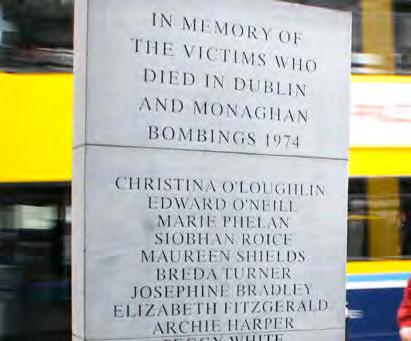
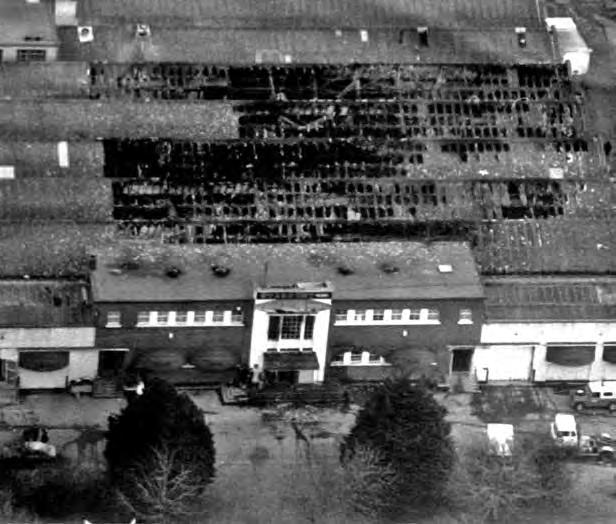
TWO TRAGEDIES TWO TORTUOUS PATHS TO TRUTH
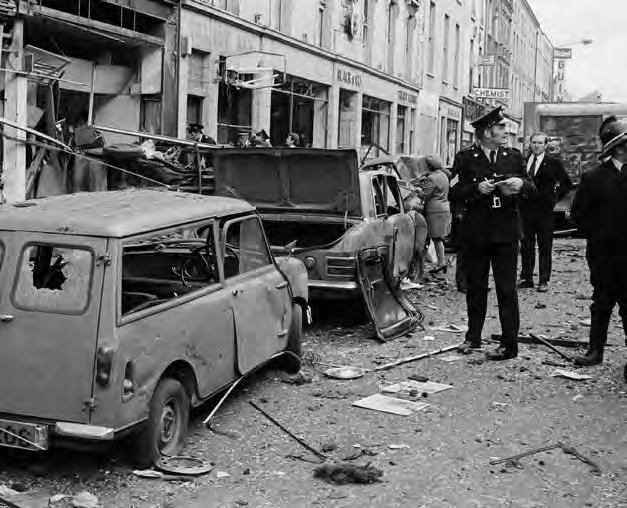
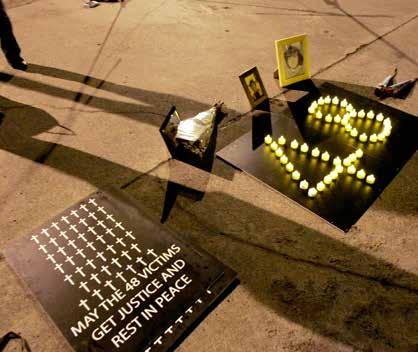
BY MÍCHEÁL MAC DONNCHA
The 50th anniversary of the Dublin and Monaghan bombings falls exactly a month after the verdict in the Stardust inquests. These two horrific tragedies are deeply etched in the collective consciousness of Dubliners and of the whole country. In both cases, the victims were predominantly from working-class communities in the capital city.
Only seven years separated them. No-warning bombs in Talbot Street, Parnell Street, and South Leinster Street, Dublin, and in the centre of Monaghan town claimed 33 lives on 17 May 1974. The fire in the Stardust night club claimed the lives of 48 young people on St Valentine’s Day, 14 February 1981. Whole families were wiped out, many more were torn apart and hundreds of survivors were injured and traumatised.
The periods of national mourning after each tragedy were quickly followed by a much longer and in many ways more painful ordeal for the families. The demand for truth was met with silence. The efforts of families
to get justice met the stone wall of the State. Each tragedy in its own way showed starkly the intransigence and coldness of political establishments when challenged to reveal truths that would undermine what they perceived as their vital interests.
For the Stardust families, the tragedy was greatly compounded by the disgraceful initial inquiry which concluded that the cause of the fire was probably arson, thus
Each tragedy in its own way showed starkly the intransigence and coldness of political establishments when challenged to reveal truths that would undermine what they perceived as their vital interests
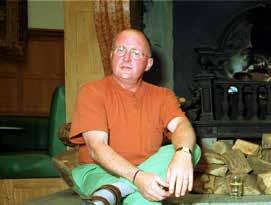

• Christy Moore
stigmatising the dead and injured and their community. It took the families decades to erase that false conclusion, to remove the stigma and to expose the truth. Through
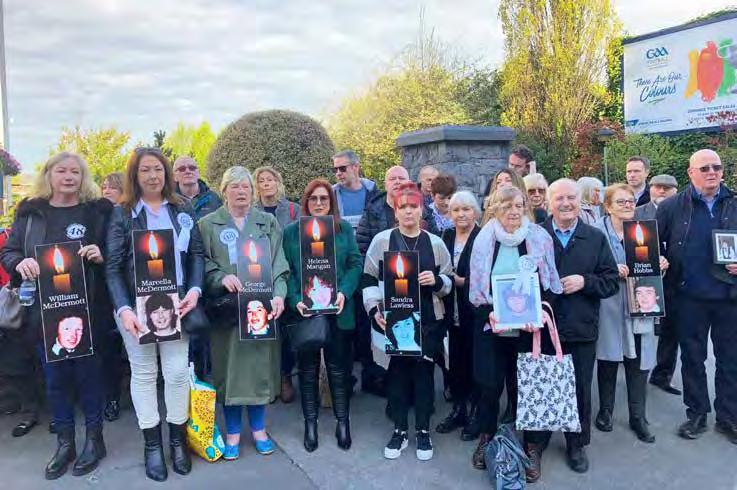
all that time, successive Irish governments failed the families, culminating in a report by retired judge Pat McCartan who said that nothing more could be done.
It was well noted that the only person ever hauled to court in relation to the Stardust was singer Christy Moore, when his song ‘They Never Came Home’ was banned. The ‘offending’ line was the one which spoke of the fire exits being chained.
It was well noted that the only person ever hauled to court in relation to the Stardust was singer Christy Moore, when his song ‘They Never Came Home’ was banned
The families persisted heroically and their campaign went on. After many bitter disappointments and false starts, the key to truth was the reopening of the inquests into the 48 deaths. The individuality of each of the dead was highlighted. The full horror of that night was relived.
The catastrophic failures and shameful neglect of the night club owners, the Butterly family, were exposed, including chained
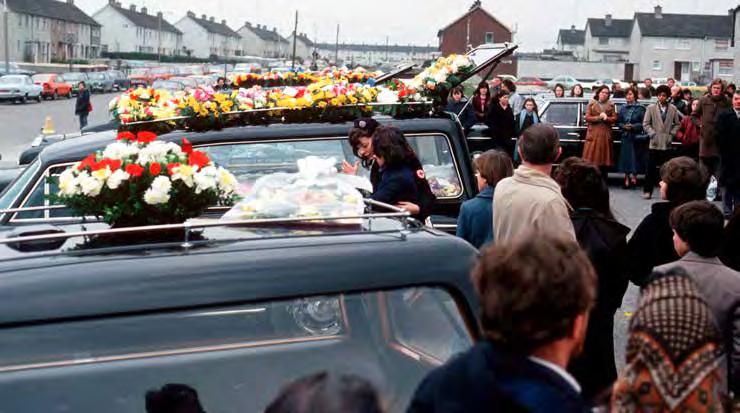
• The Stardust families when they gathered before the opening of the new inquests
• The coffins of four young victims, who died in the fire in the Stardust disco on the morning of St. Valentines Day February 1981, the fire killed 48 young people. 18/2/1981. Photo: Eamonn Farrell/RollingNews.ie
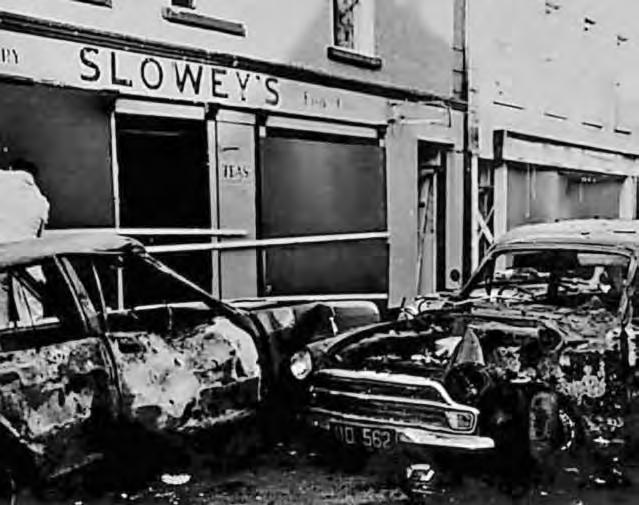
• In the aftermath of the Dublin and Monaghan bombings, the Fine Gael/ Labour government used it to pursue their anti-Republican agenda, blaming the IRA for ‘provoking’ loyalists.
fire exits. And the jury returned a verdict that vindicated the dead, the injured and the bereaved – unlawful killing. That verdict also exposed the neglect of the State as represented by successive governments and a formal apology by Taoiseach Simon Harris quickly followed.
No such apology has yet been given by either the Irish or the British government to the families of those killed 50 years ago in the Dublin and Monaghan bombings. These families too faced stone walls in their search for truth – not just of one state but of two.
The bombings which took the lives of 33 people, including a pregnant woman, were claimed by the loyalist Ulster Volunteer Force. But it was clear to many from the beginning that the co-ordination and technical expertise of the bombings pointed to British crown forces’ collusion.
As the years went by, the evidence for collusion mounted. But the Fine Gael/Labour government in power in 1974 did not want to know. In the aftermath of the tragedy, they had used it to pursue their anti-Republican agenda, blaming the IRA for ‘provoking’ loyalists.
Labour Minister Conor Cruise O’Brien went further, warning that people who supported Irish Republicans were responsible for the horror that visited Dublin and Monaghan. More seriously, the actual Garda investigation was closed down prematurely; evidence was lost, leads were not followed, and the British government was not confronted with its responsibility.
Since then, hundreds of deaths in the conflict have been directly attributed to collusion between British crown forces and loyalist paramilitaries who acted as an effective ‘third force’ in Britain’s war. This includes the 2003 Justice Henry Barron Report on Dublin and Monaghan which pointed to collusion.
And right up to the present day, reports are being published showing how the RUC and the PSNI failed to properly investigate many killings. Among those with serious
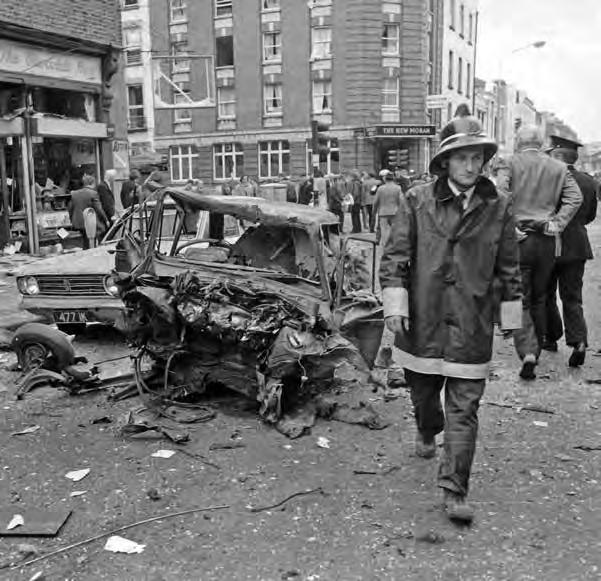
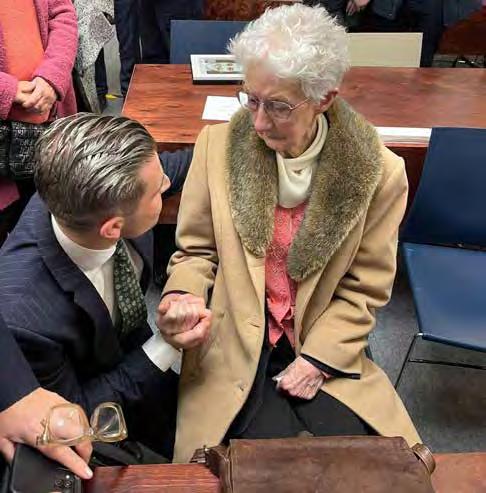
• Bridget McDermott who lost her children George, Marcella and William in the Stardust, speaks to solicitor Darragh Macken after the inquest verdict.
questions to answer on all this is current Garda Commissioner, and former senior RUC and PSNI officer Drew Harris.
The long tradition of twisting, concealing, and suppressing the truth with regard to the actions of British forces and their allies continues. Despite repeated unanimous calls by the Dáil and by Irish governments, the British government has refused to reveal its files on the Dublin and Monaghan bombings. And of course, the British Tory government’s shameful legacy legislation
which came into force on 1 May is designed to suppress truth, thwart justice, and protect its forces.
And so, on the 50th anniversary of the Dublin and Monaghan bombings, the long search for truth and justice by the families goes on. Like the Stardust families, their campaign has been heroic and dignified. They too deserve full vindication.
Mícheál Mac Donncha is a Dublin City Sinn Féin councillor
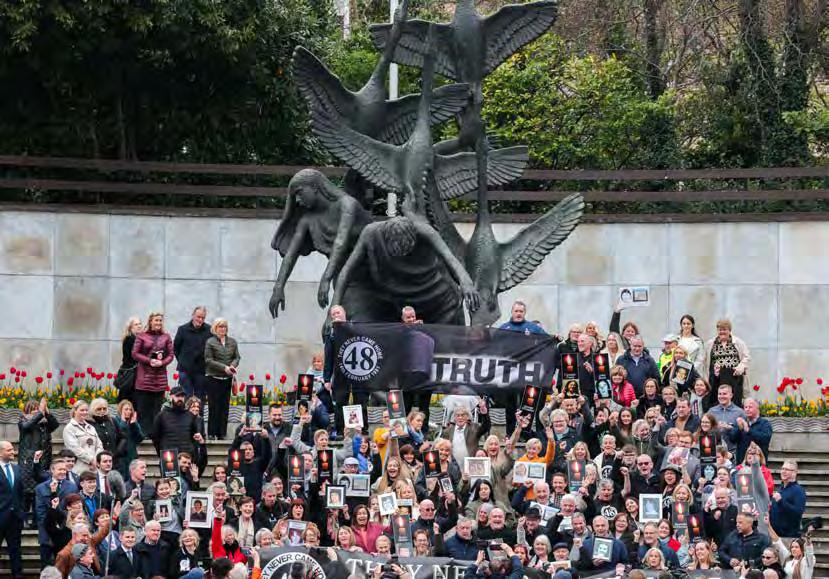
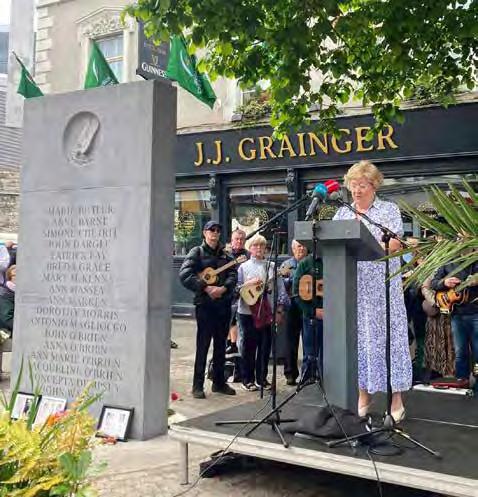
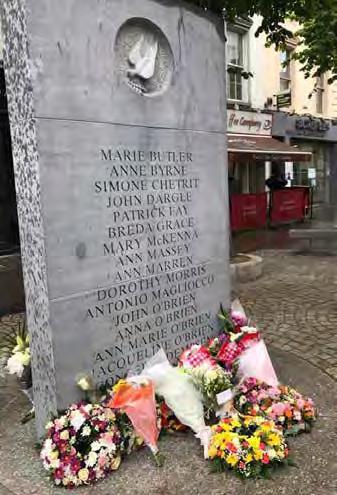
• Bernie McNally speaking at the 2023 commemoration
• The Talbot Street memorial to the dead of 17 May 1974
• Stardust inquest, supporters and family members of the 48 deceased celebrate the verdict in Dublin's Garden of Remembrance
British government's shameful Legacy Act will be challenged
BY JOHN FINUCANE
When the British government first announced its intention to legislate on how we deal with our past, it was abundantly clear that the intention was cover-up and letting British state forces and their proxies off the hook for crimes committed here.
It was, and remains, a heartless and cruel attempt to block heartbroken victims and families from ever getting justice through the courts.
My family and I have joined with hundreds of other victims and families in raising their concerns time and again about the British government’s shameful Legacy Act which is in flagrant breach of domestic and international law.
We have been joined by the Irish Government, all political parties on the island, leading churches, human rights bodies and experts, as well as bi-partisan opposition on Capitol Hill in the US, and from key figures in the EU and UN.
Heartbroken families have been fighting for many decades, determined to get the truth and justice for their loved ones
All these calls have fallen on deaf ears in British government circles, and they have instead railroaded through this disgraceful legislation against all wishes.
And since this legislation was first introduced, we have seen a consistent and ongoing trend of state bodies tactically delaying inquiries. Sinn Féin have consistently said that a consequence of the British government’s shameful Legacy Act was to incentivise state bodies to ‘run down the clock’, and to avoid their legal duties in our courts.

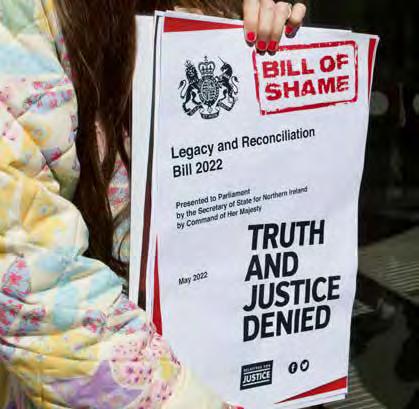
gations to hide information from families. These interventions were highly unprecedented.
Examples include the families of Sean Brown, Fergal McCusker, Seamus Dillon, Coagh and the McKearney and Fox families.
It is essential in any democracy that judicial processes are free to carry out their duties independently, free from state interference.

We have also witnessed state interference in inquests and investi-
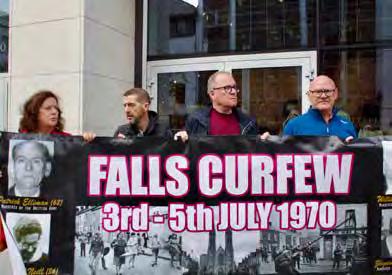

Moreover, the same British Secretary of State who has stepped in to deny families finding out the truth of what happened to their loved ones has given himself the power to rule on whether a public inquiry should be granted. This is deeply concerning.
In the cases above, it is believed British state forces were involved in collusion, and the British government subsequently stepped in to deny families any form of truth and justice.
Recent examples from our courts have shown the police and the NIO to aggressively apply to prevent even a summary of intelligence material, a “gist”, being provided to families.
Bearing in mind that a ‘gist’ is only a summary of the file’s content, it is disgraceful that the PSNI, 25 years after its formation, is still refusing to disclose information about RUC actions a generation ago.

It’s clear this act was designed to cover up the British government’s shameful actions in Ireland. The Legacy Act was designed to protect British soldiers and agents, block the rights of families and halt any legal processes.





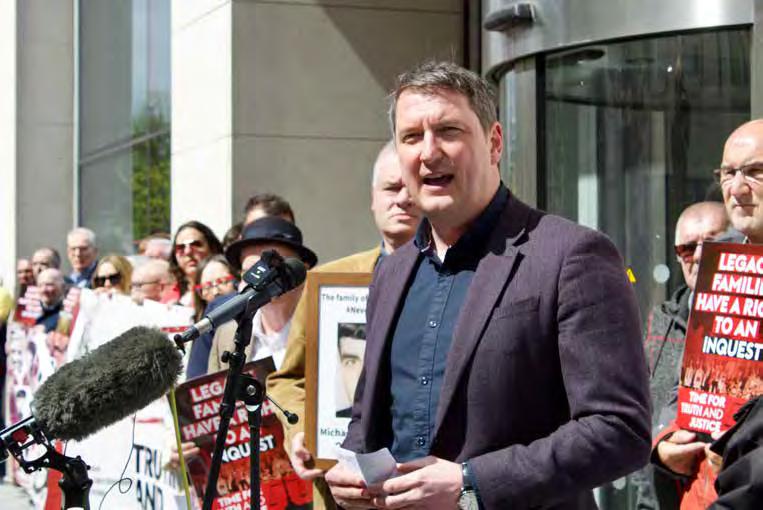

The shutting down of legacy inquests and investigations continues to have a very real and human impact on families. Heartbroken families have been fighting for many decades, determined to get the truth and justice for their loved ones
This new law will deliberately inflict pain to protect the selfish interests of the British government and their state bodies. It will undermine the rule of law, cover up the truth and deny justice to victims and families. But make no mistake, this does not represent the end.
Families will continue to fight tooth and nail to get the bottom of what happened to their loved ones. Courts have already ruled that part of this legislation is unlawful with further examinations to take place, heading all the way to the Supreme Court.
The Irish government’s interstate case is a welcome step for victims and families in challenging the act. Families should not have been forced to take individual legal actions against this act, and this action by the Irish government will now complement these challenges.
I welcome comments from the British Shadow Secretary of State that he intends to ‘repeal and replace’ the Legacy Act if Labour are in office after the next British General Election. This commitment is one which requires action should they lead the next British government. They have an opportunity to implement a system which is fair, transparent and places families’ needs at the heart of a system that for so long has frustrated them.
deliver truth and justice that families have long sought. They did this in consultation with victims and families.
This is not the case for the Legacy Act which was railroaded through without any input from families, and the public opinions they did express were disregarded by the cruel and heartless Tory administration.

The Legacy Act was designed to protect British soldiers and agents, block the rights of families and halt any legal processes
The legacy mechanisms agreed at Stormont House by the two governments and political parties in 2014 should be fully implemented without delay.
Families will not give up in their dignified and steadfast campaigns for truth and justice, and this energy will always endure. They are used to achieving truth and justice always in spite of, and never because of, the actions of the British government and their commitment continues to inspire all of us.
Sinn Féin will always stand with these families, now and in the future.
Ten years ago, political parties and the Irish and British governments signed up to the Stormont House Agreement which included human rights mechanisms to properly deal with legacy issues and to
John Finucane is the Sinn Féin MP for North Belfast




• Families and supporters at the Never Give Up Protest, 1 May, NIO Offices, Erskine House, Belfast

Gael is ea Gael; is cuma dubh, bán ná riabhach
LE FEARGAL Ó DIARMADA
Is sochaí ionchuimsitheach agus ilchineálach atá ó Phoblachtánaithe ina gcaitear le meas le gach duine atá mar bhall den tsochaí sin. Is cuma linn mar Phoblachtánaithe cén cúlra lena mbaineann tú nó cárbh as do mhuintir.
Ní raibh an Poblachtánachas bunaithe riamh ar eitneacht an duine ach go mbeadh an duine sásta cur le forbairt na hÉireann. In ainneoin tuairimí na heite deise, tá daoine ó chúlraí éagsúla lárnach i scéal na hÉireann agus ag cur leis an náisiún leis na cianta. Tuigeann Poblachtánaithe gur coincheap ionchuimsitheach é náisiún na hÉireann.
Mar a dúirt Thomas Davis: "We champion a concept of nationality which may embrace Protestant, Catholic and Dissenter, the descendants of both the Gael and the Cromwellian Planter—the Irishman of a hundred generations and the stranger newly arrived within our gates".
Agus do dhaoine le bheith mar chuid den náisiún, caithfidh fáil agus tuiscint a bheith acu ar na luachanna is
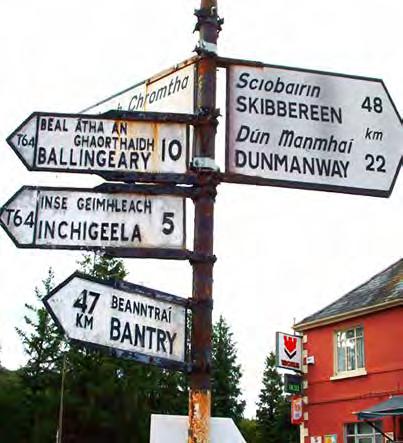
tábhachtaí a bhaineann leis an náisiún - an poblachtánachas, an streacailt do chomhionannas, agus, dár ndóigh, an Ghaeilge. Faraor, tá daoine ann atá den tuairim gur leor an poblachtánachas agus an comhionannas, agus a amharcann ar an Ghaeilge mar chur amú ama do inimircigh nó fiú mar chonstaic le páirt lárnach a ghlacadh i sochaí an náisiúin. A mhalairt atá ann. Is í an Ghaeilge an uirlis is tábhachtaí do phobal na hÉireann ó thaobh féiniúlachta de. Nascannn an teanga tú le stair
Is cuma linn mar Phoblachtánaithe cén cúlra lena mbaineann tú nó cárbh as do mhuintir
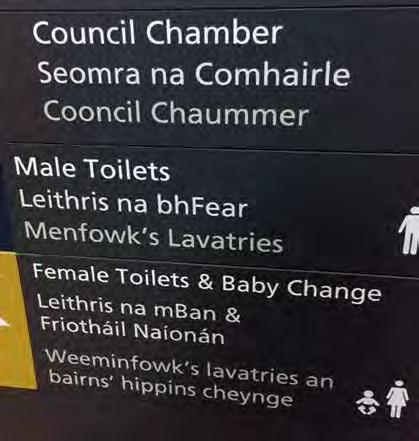
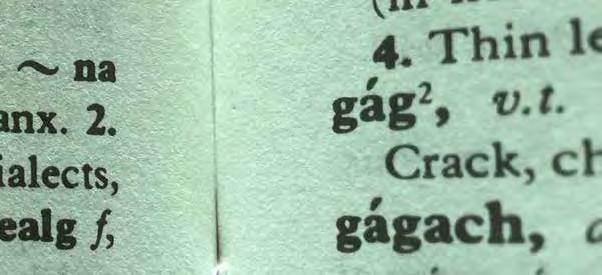
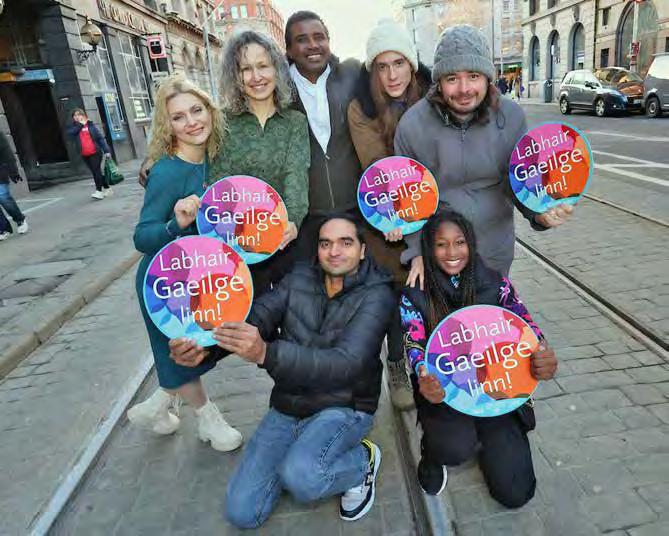
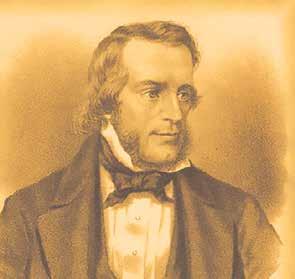

na tíre. Tá gach teanga éagsúil óna chéile agus tugann teanga tuiscint faoi leith duit faoin dóigh ina amharcann pobal ar an domhan.
Mar sin, is uirlis thábhachtach í an teanga do dhaoine atá tar éis cur fúthu in Éirinn. Is tríd an Ghaeilge a fheicfidh
Nuair atá seans ag duine an Ghaeilge a fhoghlaim, tá doras oscailte dóibh chun páirt iomlán a ghlacadh sa tír
• Foghlaimeoirí i scéim Céad Míle Fáilte
inimircigh agus teifigh go raibh fáilte roimh phobail nua i gcónaí. Agus iad ag amharc ar sloinnte coitianta ar nós ‘Doyle’ feicfidh siad gurb é ‘Ó Dubhghaill’ atá ann, ainm a chiallaíonn ‘dark foreigner’, gurb é Ó Gallchóir an leagan ceart ar ‘Gallagher’ agus an chiall atá leis sin ná ‘lover of foreigners’.
Nuair atá seans ag duine an Ghaeilge a fhoghlaim, tá doras oscailte dóibh chun páirt iomlán a ghlacadh sa tír. Tríd an Ghaeilge beidh deiseanna ann dóibh ó thaobh tuiscint níos fearr a bheith acu ar stair na tíre, ó thaobh iad féin a chur chun cinn agus fiú ó thaobh réimse níos leithne fostaíochta de.
Tá go leor constaicí os comhair inimirceach cheana féin nuair a thagann siad go hÉirinn. Bealach amháin chun cabhrú leo ná ranganna Gaeilge a bheith ar fáil dóibh, díreach mar atá ranganna Breatnaise ar fáil do na pobail nua sa Bhreatain Bheag.
Sa chomhthéacs seo, molann muid an obair iontach atá ag dul ar aghaidh ag pobal na Gaeilge timpeall na tíre agus iad ag cur fáilte roimh theifigh agus iarrthóirí tearmainn. Is céim chun tosaigh an tionscadal nua Céad Míle Fáilte atá á eagrú ag Conradh na Gaeilge le dul i bhfeidhm ar na pobail nua uilig.
Ach tá gá le tuilleadh tacaíochta ón stát chun acmhainní teagaisc a chur ar fáil do na pobail nua ó thaobh na Gaeilge de. Leis an tacaíocht chuí, beidh teachtaireacht láidir ag dul amach chuig gach réimse de shochaí na hÉireann gur linne uilig an Ghaeilge, is cuma cé chomh fhada is atá tú in Éirinn. Cuirfidh sin na faisistithe ina dtost.
Is poblachtánach atá lonnaithe in Uladh é Feargal Ó Diarmada
• Thomas Davis
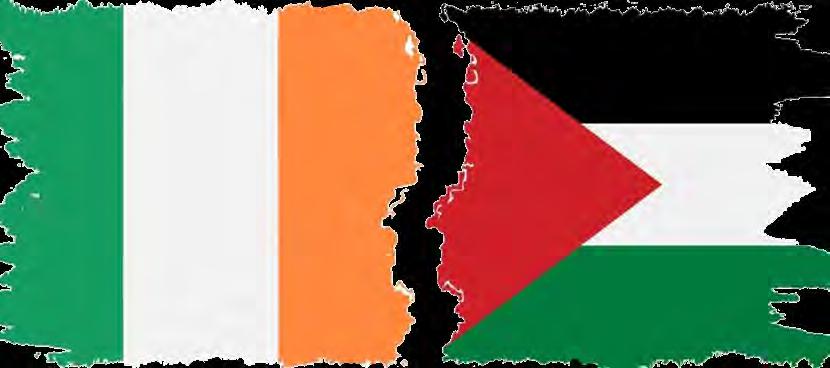
Droichid na hÉireann ar son na Palaistíne
LE CIARÁN DAWSON
Éinne a thaistealaíonn ar sheachbhóthair Chathair
Chorcaí tráthnóna Dé hAoine le leathbhliain anuas ní féidir leo a mhaíomh go bhfuil siad aineolach ar chinedhíothú Iosrael ar ár gcairde Palaistíneacha. Ó dheireadh seachtaine na Samhna anuas bíonn Agóidí Droichid ar siúl ag dhá cheann an tseachbhóthair chéanna le haird a tharraingt ar shlad na Síónach ar phobal dúchasach na Palaistíne.
Agus iad ag tarraingt ar an chathair buaileann na tiománaithe agus na paisinéirí le grúpa Mhachain ag ceann thoir an bhealaigh mhóir seo agus ar imeacht siar i dtreo Mhá Chromtha téann siad faoi dhroichead coisithe EMC, mar a thugtar go háitiúil air, áit a mbuaileann siad le muintir Fheachtais Comhghuailíochta Bhaile an Chollaigh leis an bPalaistín (BPSC).
Bhí BPSC ar an chéad ghrúpa áitiúil a thosaigh ar fud Chontae Chorcaí go luath i Mí Dheireadh Fómhair 2023 nuair nár leor le daoine mórshiúl seachtainiúil na cathrach a thiteann amach ar 13:00 gach Satharn ar Shráid an Chapaill Bhuí. Bheartaigh muid i dtosach ar Bhigil sheachtainiúil a dhéanamh ar phríomhshráid an bhaile gach Luan ag tosú ar 16 Deireadh Fómhair.
I ndiaidh coicise rinne grúpa Mhachain teagmháil linn agus mhol go ndéanfaimis an dá dhroichead coisithe a chlúdach ar an Aoine chomh maith. Fuair muid meirge mhór (STOP THE GENOCIDE) agus bratacha agus rinne muid an chéad agóid droichid ar 27 Deireadh Fómhair, go díreach sular ndeachaigh na cloig siar; níor samhlaíodh do dhuine ar bith againn go mbeimis fós ar na droichid sin nuair a rachadh na cloig chéanna chun cinn arís.
Ba é an 26ú hagóid dúinn Dé hAoine seo a chuaigh thart (19ú Aibreán) agus tá glactha againn leis gur dócha ná a mhalairt go bhfeicfimid na cloig ag gabháil siar arís san fhómhar ar ár ndroichead.
Cé go bhfuil 30 ball nó mar sin ag BPSC, is dream beag a bhíonn ag agóid an droichid; idir seachtar agus dhá dhuine dhéag a théann in airde air de ghnáth agus is leor sin.
Ar 16:30 a thosaímid agus leanaimid ar aghaidh go 18:30 de ghnáth ag brath ar an trácht. Is é an dúshlán is mó na meirgí a chrochadh amach agus a thabhairt
isteach arís agus is le ceangail chábla a fheistímid i gcónaí iad.
De thairbhe gurb í críoch an débhealaigh í bíonn scrogall tráchta thíos fúinn an chuid is mó den am, rud a thugann deis don dream atá sna gluaisteáin, leoraithe, agus busanna ár meirgí a léamh agus freagairt dúinn.
Agus freagraíonn siad; séideann siad bonnáin na gcarr, béiceann siad aníos linn, splancálann siad na soilse, agus ó fuair muid solas an lae ar ais croitheann siad a lámha linn.
Soineann nó doineann, ní raibh aon Aoine nach raibh muid ar an droichead
Soineann nó doineann, ní raibh aon Aoine nach raibh muid ar ár droichead. Bhí muid ann le linn an fhólairimh aimsire oráiste féin i Mí na Samhna. Bhí oícheanta ann agus b’eagail linn go síobfadh an ghaoth léi na bratacha agus na meirgí agus oícheanta nuair is ar éigean a bhí siad ar foluain ar laige na gaoithe. Bhí siocán agus flichshneachta ann agus bhí sé dorcha. Ina ainneoin seo d’fhorbair muid dlúthchairdeas eadrainn ar fad; cé nach raibh aon aithne ag duine ar bith againn ar a chéile roimhe, tá muintearas cothaithe eadrainn a mhairfidh i bhfad ina dhiaidh seo.
Leanadh d’fhorbairt na ngrúpaí feachtais áitiúla ar fud an chontae agus is beag baile nó sráidbhaile i gCorcaigh nach bhfuil grúpa dlúthpháirtíochta ann. I dtrátha na Nollag thosaigh baill ghrúpa Mhá Chromtha ag teacht linn ar dhroichead Bhaile an Chollaigh agus chinn grúpa an Chóibh ar agóid droichid dá gcuid féin a chur ar bun ar dhroichead Belvelly ar an bhealach isteach is amach as an bhaile sin.

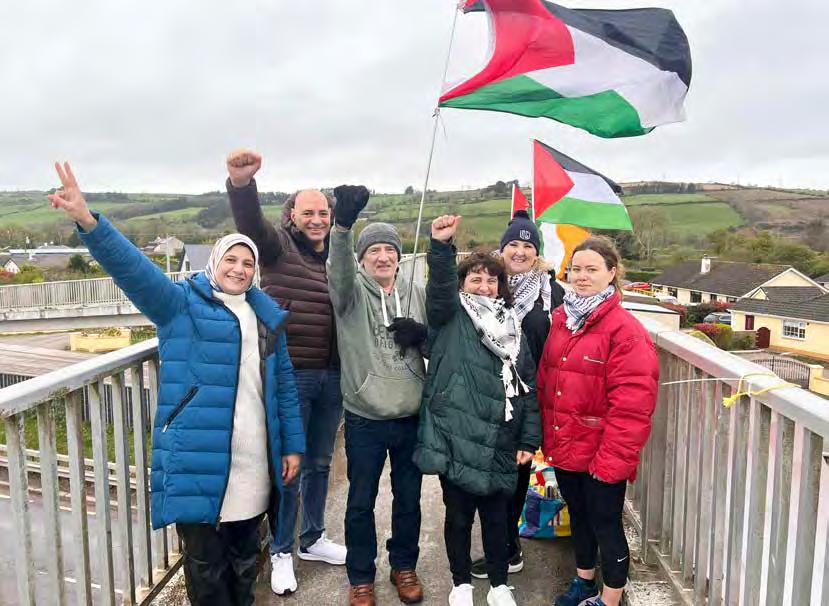
eagla a bhí ar lucht a n-eagraithe go rachadh siad i léig le himeacht aimsire, rud nár tharla.
Níor samhlaíodh do dhuine ar bith againn go mbeimis fós ar na droichid sin nuair a rachadh na cloig chéanna chun cinn arís
Dá dhroim sin eagraíodh coiste Whatsapp idirghabhála don chontae agus bunaíodh agóidí droichid ar fud an chontae. Um an taca seo, gach Aoine chomh maith le hagóidí Bhaile an Chollaigh, Mhachain, agus an Chóibh bíonn bearta ar dhroichid i Mála, i gCionn tSáille, in Eochaill, i Mainistir na Corann, i Mainistir Fhear Maí, i nDroichead na Bandan; agus cuirtear leis an liosta in aghaidh na seachtaine. Ina dteannta sin bíonn bigilí áitiúla ar siúl sna sráidbhailte Domhnach agus Dálach sa tslí go mbíonn ar a laghad dhá bheart agóidíochta ar siúl ag gach gníomhaire le linn na seachtaine chomh maith le mórshiúl an tSathairn sa chathair.
Tá tionchar na mionagóidí seo le braithstint ar mhóragóid na cathrach. 1100 duine a shiúil suas Sráid Phádraig Dé Sathairn beag seo, an 28ú mórshiúl. Nuair a tosaíodh amach ar na mórshiúlta seachtainiúla ba í an
Is dóigh linn gur chuidigh na hagóidí contae go mór leis seo ar dhá chúis. Sa chéad áit beartaíonn gach grúpa bualadh le chéile ar an Satharn agus siúl lena meirge féin, agus, níos tábhachtaí, go bhfeidhmíonn na hagóidí áitiúla mar ghairm do mhórshiúl an tSathairn; go bhfeiceann an pobal sinn agus go spreagtar chun gnímh iad.
Ní i gCorcaigh amháin atá na hagóidí droichid ar ndóigh. Tá siad i gCill Dara, i gContae an Chláir agus rinneadh teagmháil linn an tseachtain seo a chuaigh thart go bhfuil daoine i bPort Láirge ag tosú roimh i bhfad; níl aon amhras ná go bhfuil níos mó ann.
Is é an rud ba mhaith linn a dhéanamh anois, áfach, agóid droichid 32 chontae a comhordú ag Deireadh Seachtaine Saoire Bainc Mhí an Mheithimh. Tá grúpa Whatsapp cruthaithe againn idir grúpaí Bhaile an Chollaigh agus Mhá Chromtha: Droichid32. Más spéis le héinne bheith linn seol scéala chuig an Ghrúpa le hainm do bhaile, do chontae agus do shonraí teagmhála.

Iarphríosúnach poblachtach agus léachtóir é Ciarán Dawson
• Gníomhaithe Dhroichead na Palaistíne

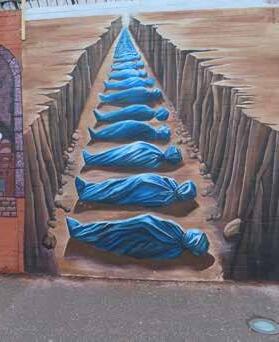
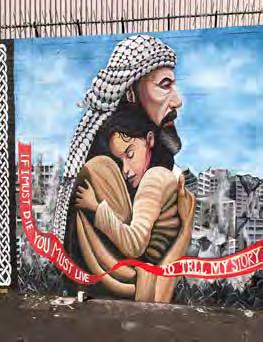
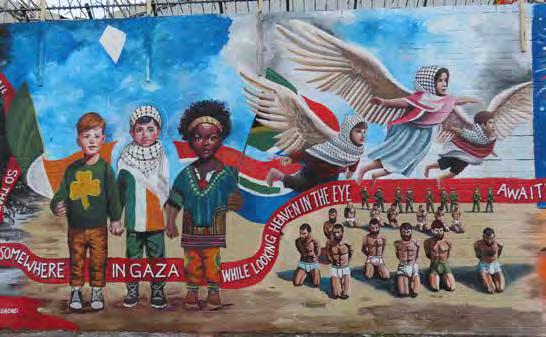
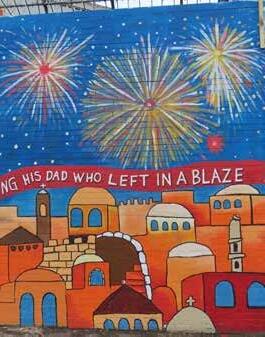
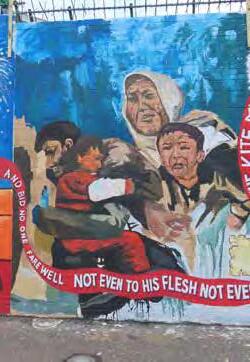
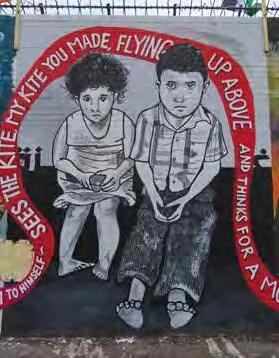

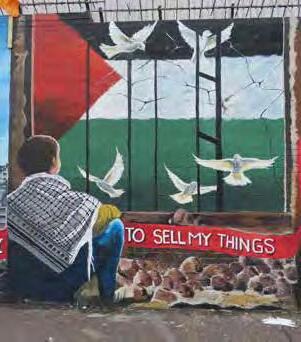
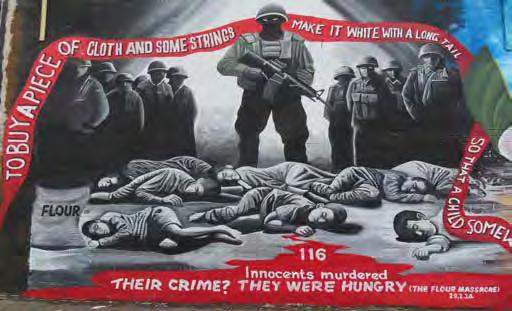
“There’s no way these murals could have been painted in Palestine, because the artists would have been shot”.
These were the words of Sinn Féin MLA for West Belfast Pat Sheehan at the unveiling of a series of murals, finished by artists from around Belfast and based on images sent to them from artists in Palestine. “It is a great show of solidarity, between Belfast, Ireland and the Palestinian people”, said Sheehan, emphasising that “thousands upon thousands of people will see these walls every day”.
The new murals were created by a group of artists led by internationally renowned painter Danny Devenny. They have transformed Belfast’s
iconic International Wall into the Palestinian Wall to show off amazing murals designed by Palestinian artists who would have suffered imprisonment, torture and death had they attempted to paint them in their homeland.
Speaking at the launch, artist Danny Devenny said, “Everyone feels they need to do something. They have to do something to stop this murder and genocide taking place.” Devenny said the Palestinian artists were “painting from the heart”, and that he and others started this project because this was “little thing we could do, because we had trouble back in our day, telling our story”.
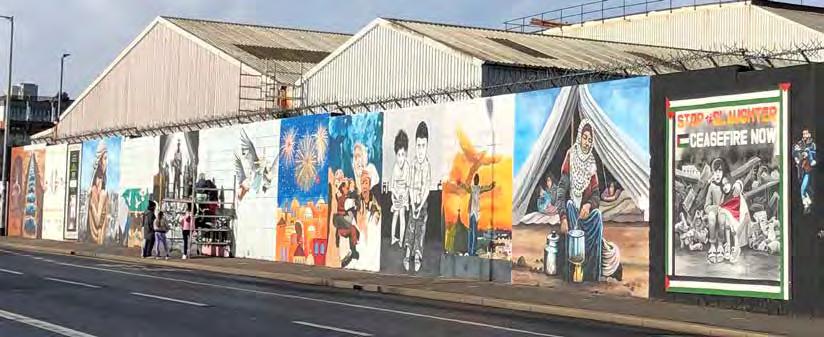
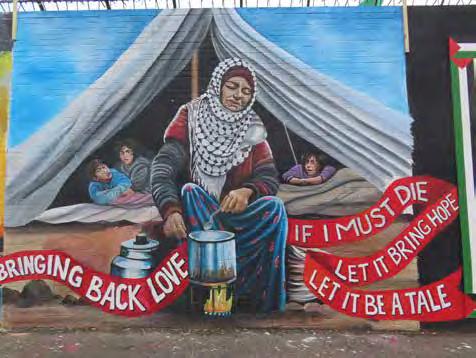
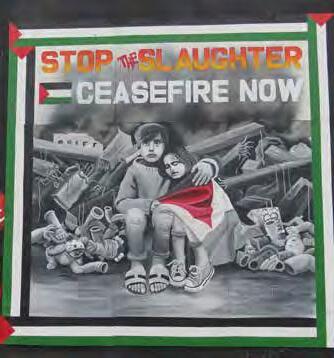
The photos here were taken by Bill Rolston. The murals were painted by Danny Devenny, Marty Lyons, and Mickey Doherty, with the help of dozens of others.
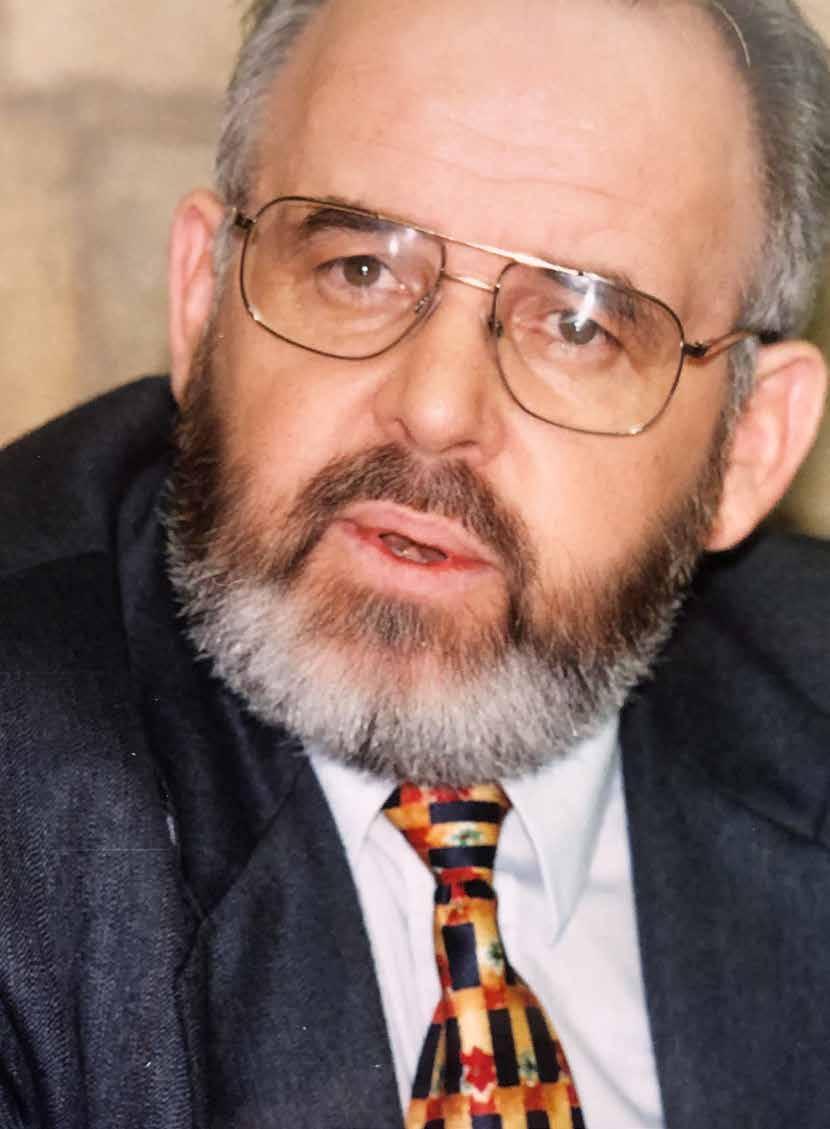
Francie Molloy joined the Republican Clubs in 1967 aged 16, beginning a nearly 60 year odyssey in republican struggle. He has been a street activist, community defender, an election director for Bobby Sands in Tyrone, and a builder of the Sinn Féin team and organisation in Mid-Ulster. Francie was elected a councillor in 1990, an MLA in 1998, and an MP for Mid-Ulster in 2013. After the announcement that Francie would not contest the next Westminster election, we asked JIM GIBNEY to interview the republican veteran. Below, we have Jim’s take on a life lived in struggle.
FRANCIE MOLLOY A LIFE IN POLITICAL STRUGGLE
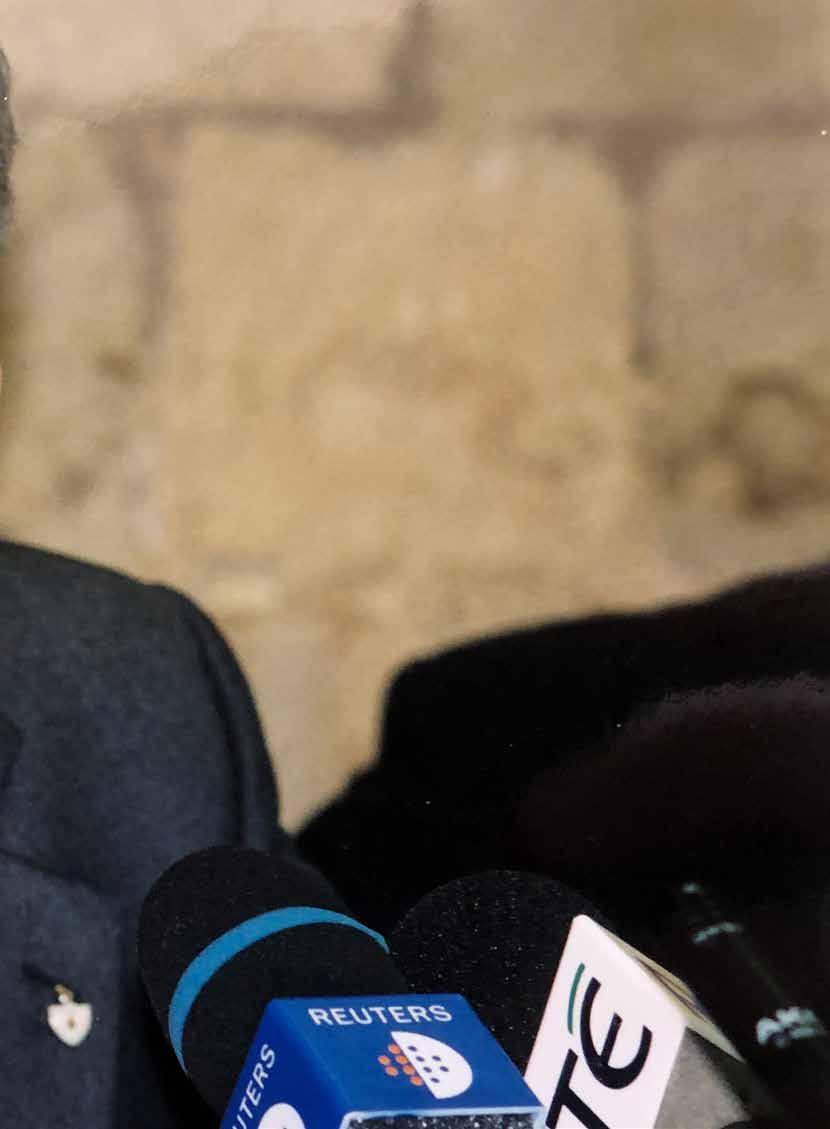
The omnipotent power of the unionist state was ever present in the life of the outgoing MP for Mid-Ulster Francie Molloy when he was growing up in Tyrone. The state’s malign tentacles reached into every facet of the lives of the northern nationalist and republican people and regularly expressed itself as a reminder to nationalists that they were deemed second class to unionists who were the privileged and preferred class of the state.
The institutional eyes and ears of the Orange state were at work politically in its political apparatus - government, judiciary and civil service, local councils, the single unionist party, and the Orange Order.
The glue that held it all together was the infamous Special Powers Act and its draconian laws were enforced by the RUC and the B Specials. Francie’s parents' generation grew up in fear of the B Specials and the Special Powers Act and with good reason.
Francie recalled his father being stopped on the road by his neighbour who was a ‘B man’. Dressed in his black uniform and armed, he knew well Francie’s father, yet he insisted on him giving his name and address under pain of being arrested immediately if he refused.
‘Sean South of Garryowen’ was a very popular republican ballad in tribute to IRA volunteer Sean South who was fatally wounded during attack by the IRA on Brookeborough barracks in 1957.
Francie’s father hid the words of the song in the house in case it was found if the house had been raided and the song discovered.
Regularly on the morning of St Patrick’s Day, the local unit of the B Specials made
a point of parading on the lane way leading up to Francie’s parent’s home in their ‘brand new tractors’ ploughing up the lane without recompense.
Land, new tractors, and armed men in uniform were the visible trappings of unionist power and domination which Francie and his family and other nationalists encountered routinely. Unionist farmers had new tractors, nationalist farmers had second-hand bikes. The message was clear about who was in charge.
The Unionist Government banned the Republican Clubs, but Francie and others carried on their activities regardless. He was a teenage activist in the Civil Rights Movement from the outset when it was set up in 1967
The unionist writ ran from the government and its establishment in Belfast to the country lanes, cities, and towns across the Six Counties. This power was also reflected economically; six of Francie’s sisters and brothers were forced to leave home and work in England. No work for Catholics at home.
The Orange Order controlled land ownership and land sales and rent. No land was sold to or rented to Catholic farmers. And while the unionist government and unionist people had almost total control of every facet of life in the Six Counties, they could not control
nor repress the desire for a united Ireland which nationalists clung to after partition.
JOINING THE REPUBLICAN CLUBS
Francis grew up in a political household where local and world politics were discussed. Partition and its consequences were never far away from the kitchen table.
In the late 1960s when he was dipping his toe into street politics and Sinn Féin, the national flag, the tricolour, and the Sinn Féin paper The United Irishman were banned by the unionist government.
At 16 years old in 1967, Francis joined the Republican Clubs, which were set up to overcome the ban on Sinn Féin. In 1968, he attended his first Sinn Féin Ard Fheis in Dublin’s Liberty Hall.
In the same year, he attended a large meeting of Republican Clubs activists in the renowned Brackaghreilly Hall in South Derry - a venue used by nationalists and republicans involved in civil rights protests and related activities.
The key themes of the civil rights movement included the discrimination in the allocation of housing that deprived nationalists of homes as well as systemic vote rigging, known as gerrymandering, which deprived them of political power.
Caledon on the Tyrone-Monaghan border briefly emerged as the fulcrum of protest at housing discrimination when the Goodfellow/Gildernew families were involved in occupying two houses in 1968 in protest at this injustice in housing was being allocated.
They were forcibly evicted from the houses by the RUC. There was widespread anger at the evictions and the ‘Caledon
squat’ boosted interest in the early civil rights protests across the North.
The Unionist Government banned the Republican Clubs, but Francie and others carried on their activities regardless. He was a teenage activist in the Civil Rights Movement from the outset when it was set up in 1967.
He described being at discussions “in barns” across Tyrone about building a mass civil rights movement to campaign for reform of the state which happened - a campaign which ultimately brought down the Unionist Government and state. He was a steward on the civil rights march from Coalisland to Dungannon which was banned from Dungannon town.
From the earliest days, he helped to build Sinn Féin across Tyrone. He was active in his cumann and Comhairle Ceantair and was a member of the Ulster Executive and the Ard Comhairle.
He was an active witness of the violence of the state against the civil rights marches he was on, and others across the six counties, like the march organised by ‘Peoples Democracy’, a student-led movement, from Belfast to Derry, which was ambushed by the RUC, B Specials, and loyalists at Burntollet.
In the few years prior to the massacre of 13 civil rights marches in Derry by the British Army in January 1972, the RUC
We knew when the British Army reoccupied the streets of Derry and elsewhere that partition and a united Ireland had become the main issues again – Francie Molloy
attacked Derry in what became known as the Battle of the Bogside; Bombay Street and surrounding streets in Belfast were destroyed in a pogrom; the Ballymacarrett, Shortstrand area was besieged by loyalist gunmen and the modern IRA emerged from the Battle of St Matthews; and the British Army imposed a military curfew on the community of the Falls Road.
Before Francie’s eyes, the political scene was dramatically changing and the political demands were shifting from basic reform of the state to its disbandment.
Francie said, “We knew when the British Army reoccupied the streets of Derry and elsewhere that Partition and a United Ireland had become the main issues again”.
THE 1950s AND OPERATION HARVEST
In the 1955 Westminster general election, two republican political prisoners
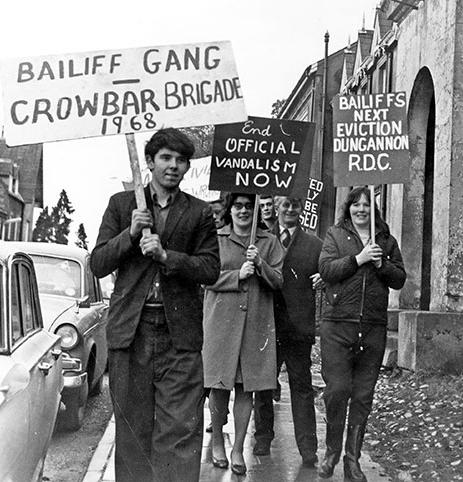
were elected MPs for Mid-Ulster and Fermanagh and South Tyrone, Tom Mitchell and Phil Clarke respectively. They had been arrested in an IRA raid for arms on a British Army base in Omagh in October 1954. Sinn Féin stood candidates in the general election across the Six Counties and polled 152,000 votes, 23.6% of the total poll.
The following year, the IRA launched its border campaign, Operation Harvest, which lasted for six years. Francie said the election of Mitchell and Clarke in both constituencies was highly significant for a number of obvious reasons and the main one was that it established a precedent for independent candidates not belonging to nationalist political parties to stand and be elected.
In the late 1960s and early 1970s, Frank McManus was elected MP for Fermanagh and South Tyrone and Bernadette McAliskey was elected for Mid-Ulster. Both elections gave a huge boost to nationalists and republicans.
The elections were part of the wider civil rights campaign which republicans like Francie were involved in. Throughout his life of front line, on the streets activism Francie believes that Coalisland, a small town in county Tyrone, was the epicentre of political resistance for the county and beyond.
St Patrick's Hall in the town was the location where republicans mobilised to take part in the 1916 Rising. And the hall was in constant use from the days of the civil rights marches in the 1960s to the days of the marches in support of political prisoners on protest for political status and the hunger strike of 1981 when ten republican prisoners died on hunger strike.
In 1966, on the 50th anniversary of the Easter Rising, he marched in the town with Kevin Mallon, who carried the banned tricolour. Mallon had been sentenced to death for killing an RUC man during the 56-62 border campaign.
The 50th anniversary was the trigger that brought Francie to United Ireland and republican politics. He was involved in school projects marking the Rising.
The first civil rights march in Tyrone left Coalisland for Dungannon. He was a steward. Francie was on the civil rights march in Duke Street in 1968 in Derry which was beaten off the streets by the RUC. The unprovoked baton attack was filmed, and the scenes of brutality were on television screens across the world.
The political activism that Francie was involved in during the 1970s, 80s and 90s reflected the political shift in the struggle away from reform to the consequences of the war. The ‘Northern Resistance Campaign’ in Tyrone involved civil rights and republican activists.
People were protesting on the streets
• Caledon courthouse protest (Francie front left)
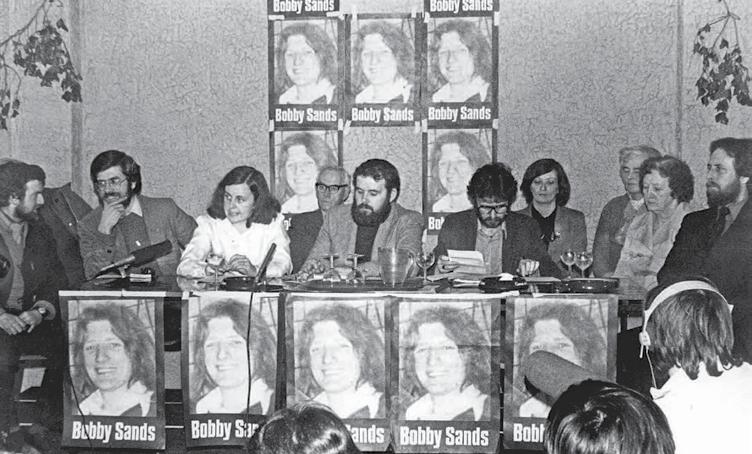
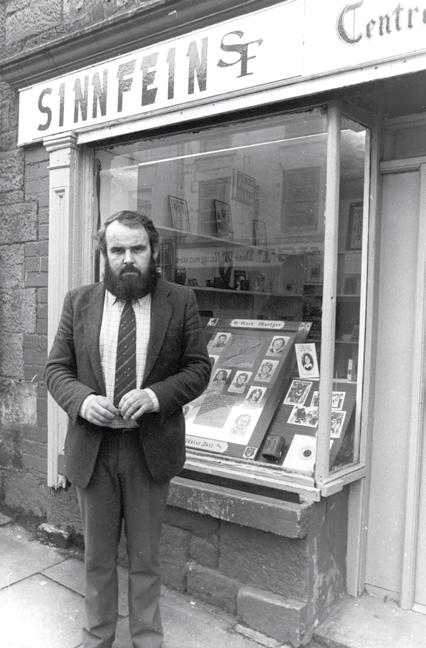
calling for an end to Internment without trial. They also embarked on a ‘rent and rates’ strike against torture and brutality of detainees in RUC barracks in support of the prisoners on protest for political status and highlighting the murder campaign of collusion between the British Crown forces and loyalists, as well as the British Crown forces’ shoot-to-kill policy against IRA volunteers and civilians in Tyrone and Armagh.
THE BOBBY SANDS ELECTION
One of the most important and politically significant campaigns that Francie was involved in was the campaign to elect Bobby Sands as MP for Fermanagh and South Tyrone in April 1981. He was the Director of Elections for the South Tyrone end of the constituency.
His detailed knowledge of how to fight elections, which he acquired from
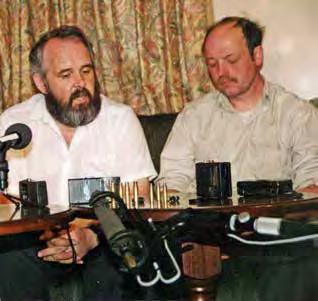
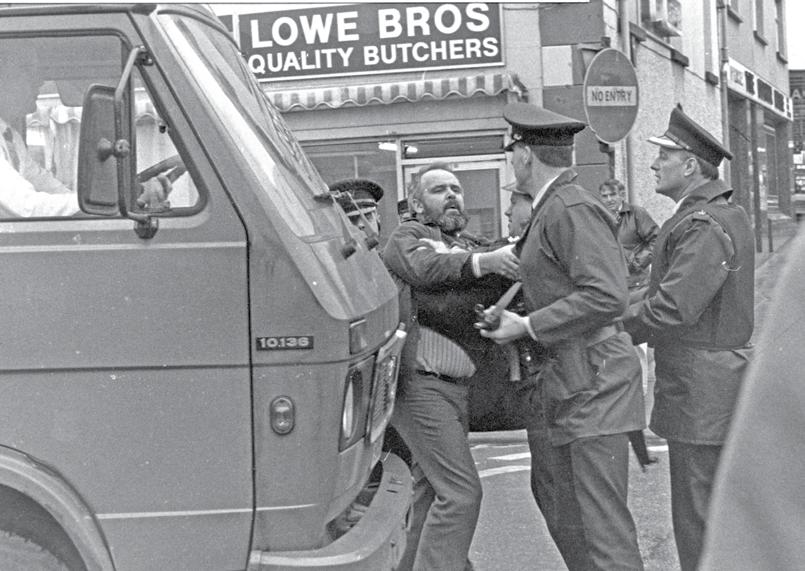
being involved in the successful election campaigns of MPs Frank McManus and Frank Maguire, he applied to Bobby’s election campaign.
Others like Aidan Corrigan, Bernadette McAliskey, and Owen Carron were also highly skilled election campaigners.
Gerry Adams and I and many other republicans across Ireland were also involved in Bobby’s election. Francie described the campaign as a massive human undertaking.
A frenetic 10 day campaign with a cerise pink single decker bus, nicknamed by a journalist as ‘The Pink Panther’, led the canvass charge setting the unstoppable momentum towards polling day.
A group of young people in the election headquarters wrote by hand addresses on 10,000 envelopes. With not enough time to carry out a comprehensive canvass of the area, voters knew what they had to do - vote Bobby Sands and they did.
People came home from England, the south of Ireland from Belfast’s universities and colleges to vote for Bobby.
Based on the successful election of Frank McManus and Frank Maguire, Francie was confident that Bobby would win, as was Bernadette McAliskey he recalled. By voting for Bobby, the people of Fermanagh and South Tyrone fundamentally changed the struggle for the better in so many ways especially elections.
Francie was keen to encourage republicans to debate the benefits of Bobby’s election and that of Kieran Doherty, Paddy Agnew, and Owen Carron, all of which happened in 1981.
But a proposal from him and Jimmy McGivern to Sinn Féin's Ard Fheis in 1981 for the party to stand candidates in local government elections in the North got firmly rejected by the party president Ruairí Ó Brádaigh. Francie said the motion was thrown out and “we were nearly thrown out of the hall with it”.
Francie’s home was on the townland of Derrymagowan, close to the Moy in County Armagh.
He was raised not far from his own home and although he lived in an area
• Francie clashes with RUC during a visit of British MP Richard Needham in The Square, Coalisland
• Outside Sinn Féin office in Dungannon in October 1984
• Bobby Sands’ election campaign (Francie centre front) with Jim Gibney to his left
• Exposing collusion with the late Councillor Brendan Dorris
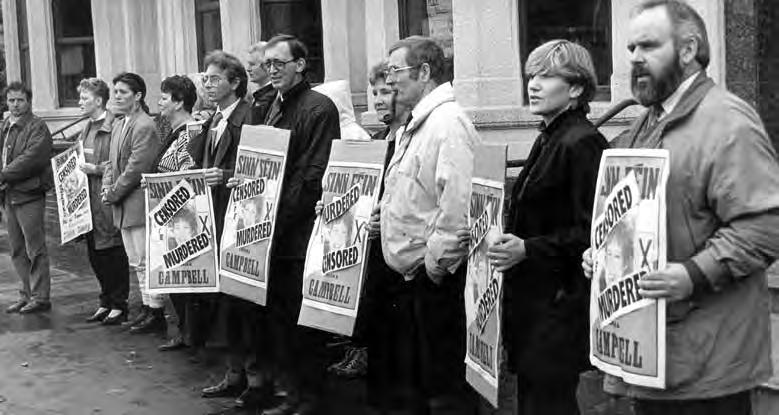
Francie can be proud of the outstanding contribution he has made to bringing about a United Ireland. He hands the freedom baton on to a younger generation
described as ‘The Murder Triangle’, because of the number of Catholics killed by loyalists, he resisted turning his home into a fortress because he wanted his wife and his children to have as normal a childhood and life as possible.
He also declined suggestions from wellmeaning people advising him to leave the area for safety reasons to live elsewhere. He said he felt a responsibility as an elected representative to the people living around him to stay.
The night before Charlie and Tess Fox were killed by loyalists, Charlie had been at his home advising him to tighten his family’s security at his home.
AN ELECTED REPRESENTATIVE
Within hours of being elected councillor in a by-election in 1990 caused by the SAS killing councillor Martin McCaughey with
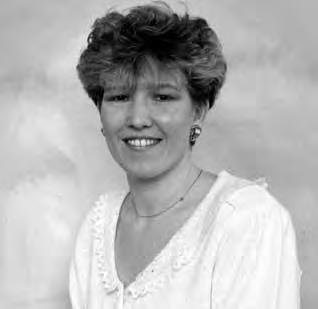
Dessie Grew in October, his son Oliver rang him to tell him that the notorious loyalist Billy Wright was sitting in a car with another man outside the family home.
Francie advised his son to use the shot gun that was in the home should Wright attack the house. A very close friend and political colleague who was his Director of Elections and got him elected to the Council, Sheena Campbell, was shot dead on 16 October 1992 by loyalists in a hotel in Belfast when she was studying law at Queens University.
Sheena’s partner, and also a close friend of Francie’s, Brendan Curran was shot and maimed by loyalists before Sheena was killed.
Francie described Sheena as one of Sinn Fein’s brightest; an expert on fighting elections who through what
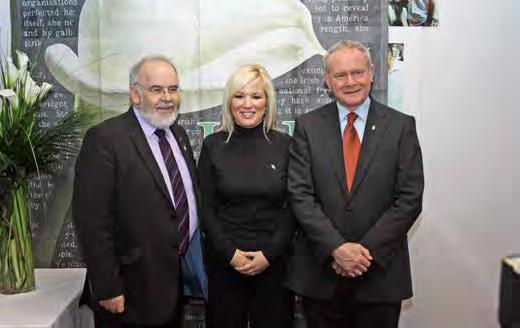
became known as the ‘Torrent Strategy’ encouraged the party to systematically fight elections by identifying its vote and recording it on ‘green registers’. An approach which brought many victories to the party and is still used to this day.
A NEAR 60 YEAR LEGACY OF STRUGGLE
His son Dominic is now a Sinn Féin councillor and is the chairperson of Mid-Ulster Council. His son Oliver works for First Minster Michelle O’Neill in her Cookstown office. He too was formerly a Sinn Féin councillor.
In his almost 60 of activism, Francie has been part of and witnessed many momentous happenings which helped bring the republican struggle to this juncture.
His family and political life were entwined. He could not have been involved in the struggle without the active and full support of his wife Anne and family. Anne made it possible for Francie to be the fulltime activist he was for all of their married life and before they got married.
They had four children Dominic, Oliver, Fiona, and Marcella. Bobby Sands used the penname ‘Marcella’ on many of the articles he sent out of the prison about the harrowing life on the blanket protest in the H-Blocks of Long Kesh. Francie and Anne’s daughter was named as a tribute to Bobby. As a child in school, the origin of the name was a topic of conversation.
As can be seen from this article, Francis Molloy MP led from the front throughout his nearly 60 of political activity. He used whatever arena was required to highlight the many areas of injustice created by Partition.
Francie was comfortable on the streets marching, debating in elected political chambers, canvasing on doors, handing out leaflets, putting up posters, representing the cause of a United Ireland across the world.
While writing this article about Francie, I thought of the relevance of Bobby Sands quote, “Everyone, republican or otherwise has their own part to play. No part is too great or too small, no one is too old or too young to do something.”
Francie can be proud of the outstanding contribution he has made to bringing about a United Ireland. He hands the baton of freedom on to a younger generation at a time when the struggle for aUnited Ireland has never been stronger.
It has been a remarkable journey for him and his family from the streets of Coalisland marching in the Easter parade in 1966 as a 15 year old teenager determined to take on the all-powerful unionist state to now where his friend and comrade and Tyrone woman Michelle O’Neill is First Minister and that unionist state is gone never to return.
Comhghairdeas, go raibh maith agat and well done Francie.
• Francie, Michelle O'Neil and Martin McGuinness at the launch of the Easter Lily in Stormont, March 2010
• Protest at thedeath of Sheena Campbell (inset), York Hotel, Belfast
Basque self-determination is within reach
Popular momentum for political change in the Basque Country reflected in record performance for EH Bildu
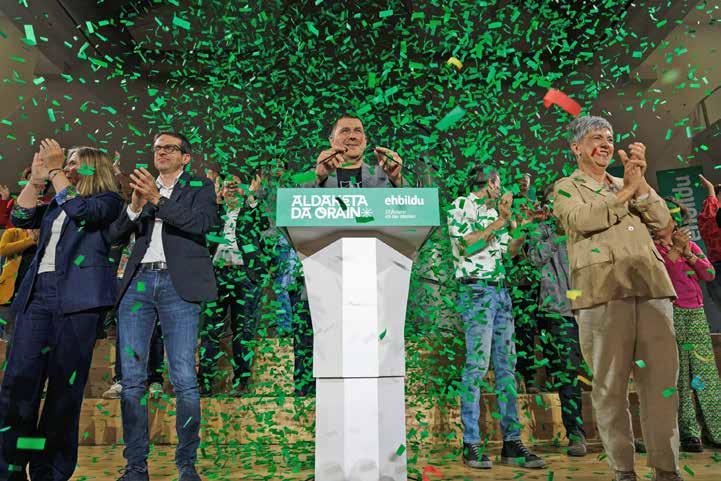
BY IGOR ZULAIKA ZURIMENDI
Euskal Herria Bildu (EH Bildu) achieved its best result ever in April’s elections. In the three provinces constituting the Basque Autonomous Community, they won 27 out of 75 seats, representing 32% of the total poll with 341,000 votes, an increase of 91,000 from 2020.
The pro-independence left coalition and the ChristianDemocrat Basque National Party (PNV) tied on 27 seats each, returning 54 pro-sovereignty seats in the 75-seat Parliament, the highest number ever.
These are unprecedented and remarkable times in the Basque Country. Basque society is changing and this is reflected in the electoral results, with more voters increasingly feminist, progressive, egalitarian, and prosovereignty, resembling EH Bildu’s ideological stand more and more.
At the same time, Basque society has rejected showtime style politics, which are common in the Spanish state, the disqualification of political adversaries, and noise-filled debates.
EH Bildu has campaigned on a platform that modern problems demand modern responses. We believe it is impossible to respond to 21st century challenges, from within 19th century buildings with 20th century mindsets, and that therefore new ideas, new solutions and new leadership are a must.
But it would be unfair for us to claim sole possession of the truth and the only valid policies and solutions. The challenges ahead are so big that in the Basque context
it would be impossible for any single party to deal with them on its own.
Taking this into account, EH Bildu has defended the need for new cooperative politics in our country. This entails abandoning partisan politics and embracing a new scheme of inter-partisan cooperation in issues of national interest, such as education, energy transition, or the housing crisis. This approach also allows for competition in electoral terms.
The election mandate for such an approach is clear. The popular vote has returned a Parliament that is overwhelmingly sovereigntist, 54 seats out of 75 for self-determination. It is also progressive; EH Bildu 27, PSE 12 and Sumar 1, adding to 40 seats, confirming the willingness of Basque society to take a step forward for greater levels of self-governance and to deliver progressive public policies in sectors like health, education, and housing. EH Bildu has publicly stated that it is willing to respect the people’s mandate.
Unfortunately, the PNV and PSE (The Socialist Party of the Basque Country) have already started to discuss the creation of what we call a ‘Nor&Neither’ Government, neither sovereigntist nor progressive. Despite the election results showing wear and tear on their model of politics and governance, both parties insist on holding government positions.
And all this happens at a time on which every party in the Basque Parliament, except for conservative PP and
• Arnaldo Otegi Mondragón, EH Bildu, General Secretary
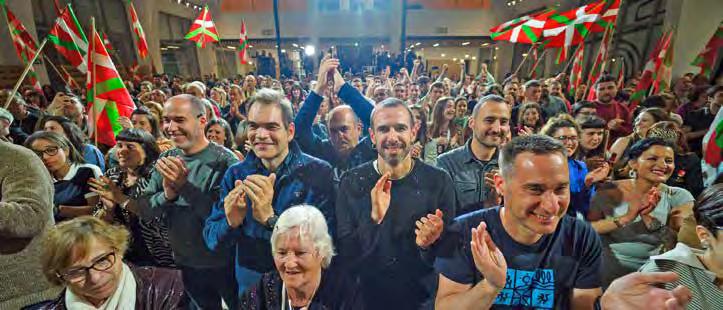
far-right VOX, support the Central Government in Madrid, a government that has publicly stated it is willing to discuss the territorial model of the Spanish state. Such a debate would have deep implications for both the Basque Country and Catalunya.
Hopefully such a debate, together with the ongoing discussions in Corsica and New Caledonia under French rule, would also have deep implications for other nations seeking their own sovereignty. When one of us takes
Basque society is changing and this is reflected in the electoral results, with more voters increasingly feminist, progressive, egalitarian, and pro-sovereignty
a step forward, it inspires the rest and shows to our respective societies that change in constitutional status is possible and desirable. Moreover, it shows that we are not alone.
At the end of the day, Basques and Catalans don’t want to be more than any other people, but neither less. We are mature societies that want to have all the possible tools to respond to the challenges ahead, as Declan Kearney wrote a few weeks back on An Phoblacht online: “National sovereignty is inseparable from the organisation of society in the interests of all citizens. That is, a process of democratic change, transition and social transformation.” And whenever we face a challenge, be it in our personal or political lives, it is always easier to confront it with friends and allies.
The opportunity to secure self-determination for our peoples is within reach, let’s work together for that aim!
Igor Zulaika Zurimendi is the EH Bildu representive for International Relations and Policy

• Pello Otxandiano celebrates the April election. He is the EH BIldu candidate for Premier of the Basque parliament
“I continued to listen to their talk and there was mention continually of somebody named Connolly. Connolly says so and so. Connolly does not agree with that. Connolly’s point of view is this, and so on. Then when I had an opportunity, I asked who was this Connolly. ‘He is a very smart fellow,’ I was told”.
From: William O’Brien, ‘Forth the Banners Go’
Retrieving James
WHATWOULD JAMESCONNOLL Y THINKOFIREL ANDTODAY?
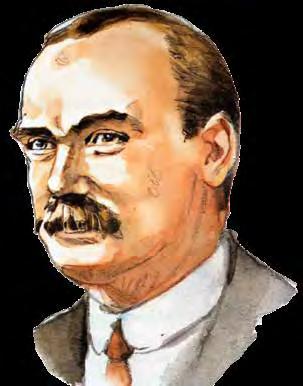

Connolly
from the
‘mouldering
BY JOE DWYER
Imagine for a moment that James Connolly, signatory of the 1916 Proclamation and Commandant General of republican forces in Dublin during Easter Week, was plucked out of his time and dropped into 2024.
What would he have to say? Putting to one side the wondrous technological advancements and the collapse of once insurmountable institutions, characters, and certainties; what would he have to say about the here and now?
Connolly was a true original. In his praise of Wolfe Tone in the Workers’ Republic in August 1899, he noted; “We are told to imitate
“We are told to imitate Wolfe Tone, but the greatness of Wolfe Tone lay in the fact that he imitated nobody” - James Connolly
Wolfe Tone, but the greatness of Wolfe Tone lay in the fact that he imitated nobody”. It is a sentiment that could readily be said of Connolly today.
His unique perspective, and almost prescient foresight, single him out from his contemporaries. His inexhaustible intellect and curiosity fuelled a plethora of articles, pamphlets, and speeches, covering almost every facet of national, social, and political struggle.
As he professed in 1915’s ‘An Irish Blackguard’, “Being naturally lazy, I hate to write an article and, being naturally good natured, I hate to refuse”. In this respect, we can be thankful that his good nature often conquered his lethargy.
The writings he left behind remain his greatest legacy. His
records of the past’
erudite, but nonetheless accessible, writing style sets his works apart from many, equally hefty, tomes of his day.
As an observer and activist, firmly rooted in the world around him, it would be fair to question what value there is in transplanting Connolly to our own time. As L.P. Hartley famously told us, “The past is a foreign country; they do things differently there”.
However, as a counterfactual thought exercise, or even simply as an inoffensive daydream, it is a worthwhile hypothetical. By seeking to apply Connolly’s thinking to the challenges of today, one can hopefully begin to extract and isolate his most enduring insights.
It could be said that Connolly’s writings are more discussed than they are actually read. Therefore, this encounter between past and present might reveal the continued relevance of his words and what value there is to be found in revisiting them.
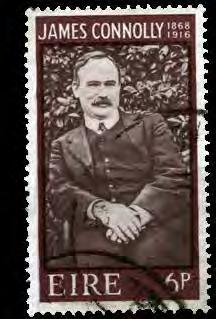
So, in the interest of curious consideration, what would Connolly make of Ireland in 2024? Would he stand by his judgement in 1913 that “Ireland is a country of wonderful charity and singularly little justice”. Would he have cause for newfound optimism?
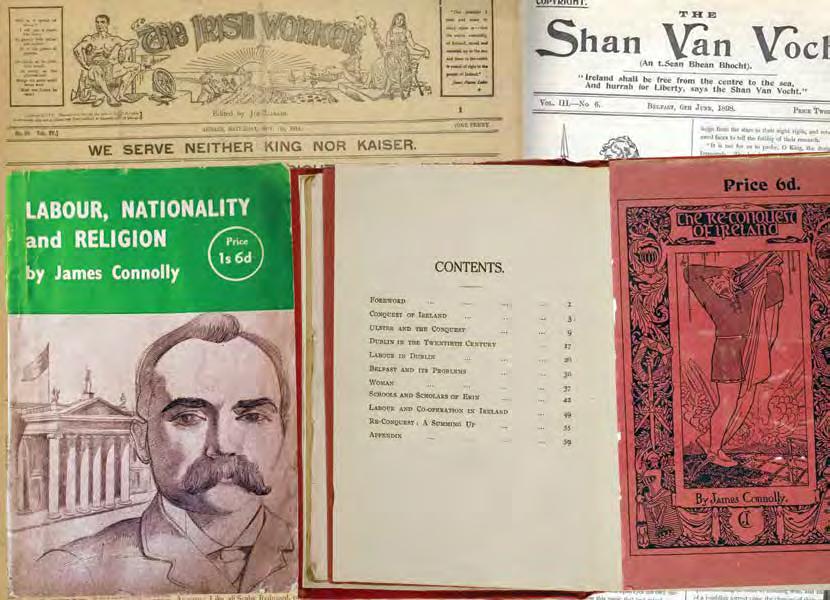
As a committed trade union organiser, Connolly’s first interest would be the standing of workers in the country. The expansion of precarious work, and in particular zero hours contracts, would have discomforted him.
In the December 1899 issue of Workers’ Republic, he was clear that the “onward march of capitalist society crushes the workers lower and lower in the mire, makes life more and more precarious for the toilers, and as a consequence confronts the manhood of Labour with the grim alternative:- Either revolution to enable the workers to grasp the power of the State and so render possible the
‘Our cities can never be made really habitable or worthy of an enlightened people while the habitations of its citizens remain the property of private individuals’ James Connolly
restoration to the labourer of the control of the means of existence, and thus of a healthy, happy, human life, or else a lifetime of degrading toil with the workhouse as a final reward.”
The workhouses might be long gone, but social welfare provision for the unemployed remains woefully inadequate, both North and South. Connolly would certainly echo those calling for an appropriate system of income protection to assist those who are experiencing unemployment.
Connolly would also be alert to the changing nature of work. Particularly the creeping automation and accompanying isolation within the workplace. As he noted in the Workers’ Republic in August 1898, “Every new labour-saving machine at one and the same time, by reducing the number of workers needed, reduces the
demand for goods which the worker cannot buy, while increasing the power of producing goods, and thus permanently increases the number of unemployed, and shortens the period of industrial prosperity”.
There can be no doubt that he would have smiled at scenes across the Six Counties on 18 January when public sector workers took to picket lines to demand fair pay. The joint strike action marked the single biggest day of industrial action for a generation and put those holding the political institutions to ransom on the backfoot. As Connolly once observed in April 1908’s The Harp, “The real battle is being fought out, and will be fought out, on the industrial field”. This remains true today.
Undoubtedly, Connolly would be appalled at the scale of the housing crisis. As he articulated in November 1899’s Workers’ Republic, “Our cities can never be made really habitable or worthy of an enlightened people while the habitations of its citizens remain the property of private individuals. To permanently remedy the evils of city life the citizens must own their city”.
The private rental sector in the 26 Counties is fundamentally broken and the Fianna Fáil-Fine Gael partnership has abjectly failed to deliver social and affordable homes. Their suggestion of further tax credits for landlords is simply not going to remedy the situation. I wonder what Connolly would have to say about the vulture funds buying up property around Ireland?
In December 1915, Connolly attended a meeting in Dublin’s Mansion House that issued an urgent call for an “adequate loan to the Dublin Corporation to enable that body to provide homes for the housing of the workers”. As Connolly summarised, it represented, “a square issue that can neither be avoided nor ignored”. It is yet another observation of his that still stands true today.
While only representative of a small minority, one can be confident that Connolly would have no truck for those stoking
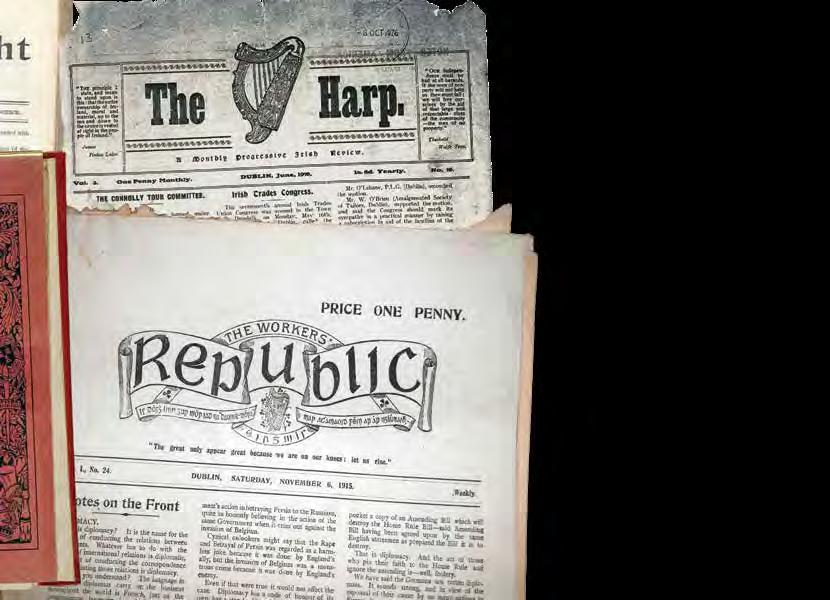
hostility against refugees and asylum seekers. The scenes of masked parties marauding the streets of Dublin, looting shops and shooting fireworks or the pictures of newly arrived women and children being barracked in Roscrea stand in sharp contrast to James Connolly’s worldview.
In October 1914’s Irish Worker, during the early days of the First World War, he cautioned, “Whatever we may think of the war, let not any wrath or displeasure be vented upon the refugees themselves. They are but helpless victims of a criminal war for which they were in nowise responsible… Say no harsh word to them.”
As a committed socialist and anti-imperialist, Connolly rejected any attempts to provoke racial or sectarian divisions. Recognising,
As Connolly wrote in the Workers' Republic in July 1899, ‘The ballot box was given to us by our masters for their purpose; let us use it for our own’.
in The Harp in January 1908, that, “All races are mixed more or less; a pure race does not exist. In all the world there cannot be found a territory of any size still inhabited exclusively by the autochthonous or original inhabitants.”
As he outlined in 1910’s ‘Labour, Nationality and Religion’, Connolly believed that “All men are brothers, that the same red blood of a common humanity flows in the veins of all races, creeds, colours and nations, that the interests of labour are everywhere identical, and that wars are an abomination”.
If Connolly could see the daily headlines of 2024, he would be disturbed by Israel’s bombing of Gaza and slaughter of innocent Palestinians. Just as he would be dismayed at Russia’s military

invasion of Ukraine. As he wrote, in the midst of the outbreak of the First World War in August 1915, “This war appears to me as the most fearful crime of the centuries. In it the working class are to be sacrificed that a small clique of rulers and armament makers may sate their lust for power and their greed for wealth. Nations are to be obliterated, progress stopped, and international hatreds erected into deities to be worshipped.” They are words that uncannily speak to the global scene today.
With regard to the recent referendums, Connolly certainly never saw a woman’s place as being ‘in the home’. If anything, he considered their place to be in the revolution.
As he outlined, in his seminal ‘Re-Conquest of Ireland’, “In
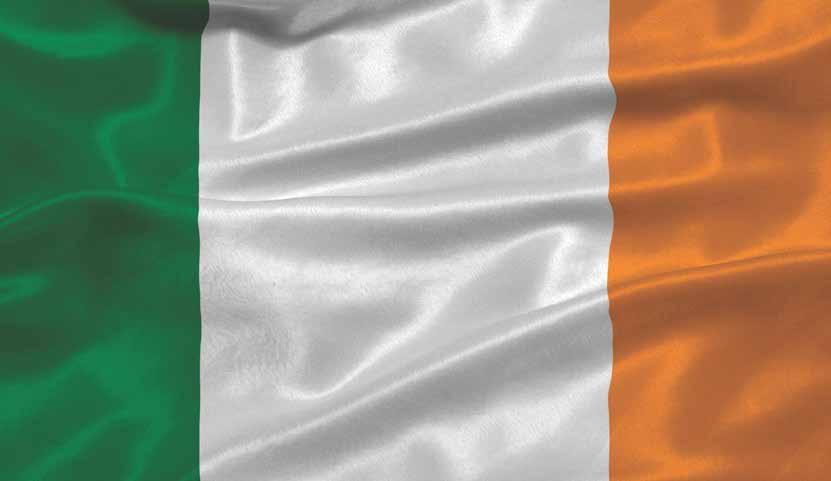
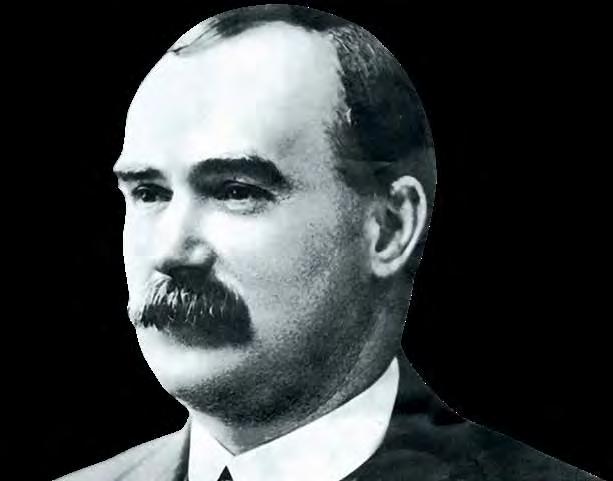
Ireland since the conquest, the landlord-capitalist class has ruled; the beliefs, customs, ideas of Ireland are the embodiment of the slave morality we inherited form those who accepted that rule in one or other of its forms; the subjection of women was an integral part of that rule”.
Perhaps most of all Connolly would be troubled to find himself in a partitioned Ireland in 2024. It was the scenario that he feared most of all. As he caught up on all that he had missed over the course of a century, he would quickly discover that his worst predictions were proven correct. Partition did indeed mean “a carnival of reaction both North and South”, it did “set back the wheels of progress” and destroy the unity of the labour movement.
Having surveyed the current state of affairs, through the lens of Connolly’s words, it is clear that there is a great deal that Connolly would - unfortunately – recognise today. From precarious
What would Connolly make of Ireland in 2024? Would he stand by his judgement in 1913 that ‘Ireland is a country of wonderful charity and singularly little justice’
employment to inadequate housing, to racial prejudice and foreign wars, to the ongoing subjugation of women and the festering wounds of Partition.
Hopefully, however, Connolly would also identify some cause for optimism. The anticipated elections this year, both North and South, provide a clear opportunity for genuine change. It is an opportunity that he would have embraced. As Connolly wrote in the Workers' Republic in July 1899, “The ballot box was given to us by our masters for their purpose; let us use it for our own”.
While Connolly recognised the legitimacy of physical force, he considered it only justified in exceptional circumstances. Indeed, he had long advocated for the “conquest by the Social Democracy of political power in Parliament, and on all public bodies in Ireland” as “the readiest and most effective means whereby the revolutionary forces may be organised and disciplined to attain that end [a Socialist Republic]”.
As he argued, in the November 1896’s Shan Van Vocht, “Were a political party formed in Ireland to educate the people in sound
national ideas by pledging every candidate to openly repudiate the authority of the Crown and work for the realization of republican principles, it would achieve a much-needed transformation in Irish politics”.
Admittedly, there is no victory to be found debating how Connolly would vote in 2024. But whatever else, in the June 1911 issue of Forward, he clearly recommended that, “Any Irish Socialist who recognises Ireland’s right to self-government should logically embody his political activities in a form of organisation based upon the principle of Irish self-government”. This writer shall leave it to the reader to draw their own judgement from this guidance.
None of this supposition is intended to treat Connolly’s writings as inherited dogma or inviolable truth. Truth is a relational concept; therefore, critique can only ever engage with systems of ideas. While the clarity and certainty of his beliefs still hold value, Connolly was not infallible and his writings are not scripture.
Indeed, as he himself stipulated, in the Workers’ Republic in August 1898, “Any movement which would successfully grapple with the problem of national freedom must draw its inspiration, not from the mouldering records of a buried past, but from the glowing hopes of the living present, the vast possibilities of the mighty future”.
Now that Connolly has himself fallen into those same mouldering records, it is the application of his words, and not their recitation, that truly matters. As inspiring as his example may be, he would not have wished for anyone to imitate him. The aim of Irish republicanism must always be to guard the flame, not worship the ashes.
As Connolly ably explained, in Shan Van Vocht in January 1897, “Our nationalism is not merely a morbid idealising of the past,” rather it is a guide to action, “capable of formulating a distinct and definite answer to the problems of the present and a political and economic creed capable of adjustment to the wants of the future”.
Quite appropriately, following her historic appointment as First Minister in the North, Michelle O’Neill told the Northern Assembly that “Every generation must write its own chapter, define its own legacy”. But so too did she recall Connolly’s immortal words, “Our demands most moderate are, we only want the earth”. In every action going forward, we must carry with us that demand.
Joe Dwyer is Sinn Féin’s Political Organiser in Britain
Grúpa Cónasctha den Chlé Aontaithe Eorpach • den Chlé Ghlas
TREO EILE DON EORAIP
ANOTHER EUROPE IS POSSIBLE
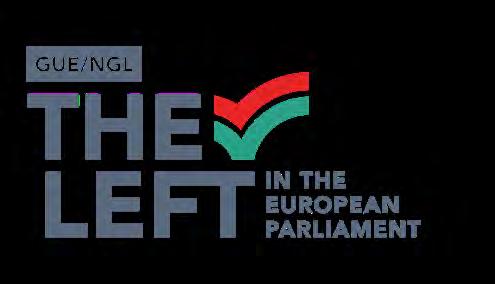

Belfast People’s Assembly
125 Street Name, Belfast BT14 8FP
T: 028 XXXX XXXX
E: email address here
ABAIR LEAT HAVE YOUR SAY HAE YER SPAKE
THE NEW IRELAND IS FOR EVERYONE
Mr John Smith
125 Street Name
Line two of address here
Line three of address here
County Here
BTXX XXX
32nd Octember 2021

Dear Mr Smith,
This text is only intended to show that the recommended font for letters is Arial 10.5pt. You can choose your preferred line spacing. This text is only intended to show that the recommended font for letters is Arial 10.5pt. You can choose your preferred line spacing.This text is only intended to show that the recommended font for letters is Arial 10.5pt. You can choose your preferred line spacing.This text is only intended to show that the recommended font for letters is Arial 10.5pt. You can choose your preferred line spacing.This text is only intended to show that the recommended font for letters is Arial 10.5pt. You can choose your preferred line spacing.
This text is only intended to show that the recommended font for letters is Arial 10.5pt. You can choose your preferred line spacing. This text is only intended to show that the recommended font for letters is Arial 10.5pt. You can choose your preferred line spacing.This text is only intended to show that the recommended font for letters is Arial 10.5pt. You can choose your preferred line spacing.This text is only intended to show that the recommended font for letters is Arial 10.5pt. You can choose your preferred line spacing.This text is only intended to show that the recommended font for letters is Arial 10.5pt. You can choose your preferred line spacing.
This text is only intended to show that the recommended font for letters is Arial 10.5pt. You can choose your preferred line spacing. This text is only intended to show that the recommended font for letters is Arial 10.5pt. You can choose your preferred line spacing.This text is only intended to show that the recommended font for letters is Arial 10.5pt. You can choose your preferred line spacing.This text is only intended to show that the recommended font for letters is Arial 10.5pt. You can choose your preferred line spacing.This text is only intended to show that the recommended font for letters is Arial 10.5pt. You can choose your preferred line spacing.
Yours Sincerely,
Name Surname Title or Position
MICHAEL GAUGHAN'S HUNGER FOR JUSTICE
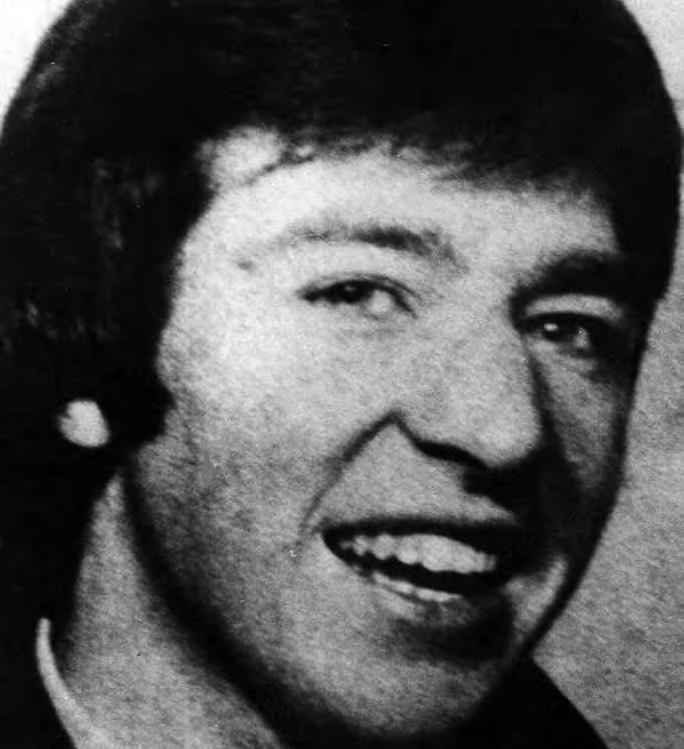
“My code of life by which I live would make me refuse anyone’s attempts to give up what I believe in”
Michael Gaughan, letter to his parents, 29 May 1974
BY MÍCHEÁL MAC DONNCHA
In historical terms the death of Michael Gaughan marks a halfway point between our time and the end of the Civil War, the consolidation of Partition and of the two partitioned states. Like so many of his generation, Michael Gaughan was to live through the tragic legacy of Partition as it manifested itself in the outbreak of armed conflict in the North in 1969 and he was one of the many young people who once again stepped forward into the ranks of the Irish Republican Army.
Their generation had been failed by those who were described at Michael Gaughan’s funeral as the “wellheeled politicians of the South, the hired scribes and venal churchmen”. Over decades these politicians had uttered anti-Partition rhetoric and had paid lip service to the men and women of 1916. But in reality, they had abandoned nationalists in the sectarian Six-County state, while in the 26 Counties they had presided over a deeply conservative state where social policy was determined by the ‘venal churchmen’.
When the Northern crisis broke the politicians quickly
retreated and by 1972 they were jailing republicans and imposing political censorship. And there were plenty of ‘hired scribes’ in the press and broadcasting to back them.
In contrast to all this were young men and women like Michael Gaughan. He came from Ballina, County Mayo, and was in England to make a living in exile, like hundreds of thousands of his compatriots, away from an Ireland of scant employment and mass emigration. He was politicised by the Northern crisis and soon became active in Irish Republicanism. In 1970 he met the late Danny ‘Jack’ McElduff in Manchester. A Tyrone man, he was the senior IRA officer in England and Michael Gaughan volunteered to play his part.
Michael Gaughan’s time on active service in England did not last long. On 21 May 1971 he was arrested in Liverpool Street Station in London with three others, including McElduff. They were charged in connection with an armed bank raid and, two days before Christmas 1971, a sentence of seven years in prison was imposed on Michael Gaughan.
For the next two and half years in English prisons
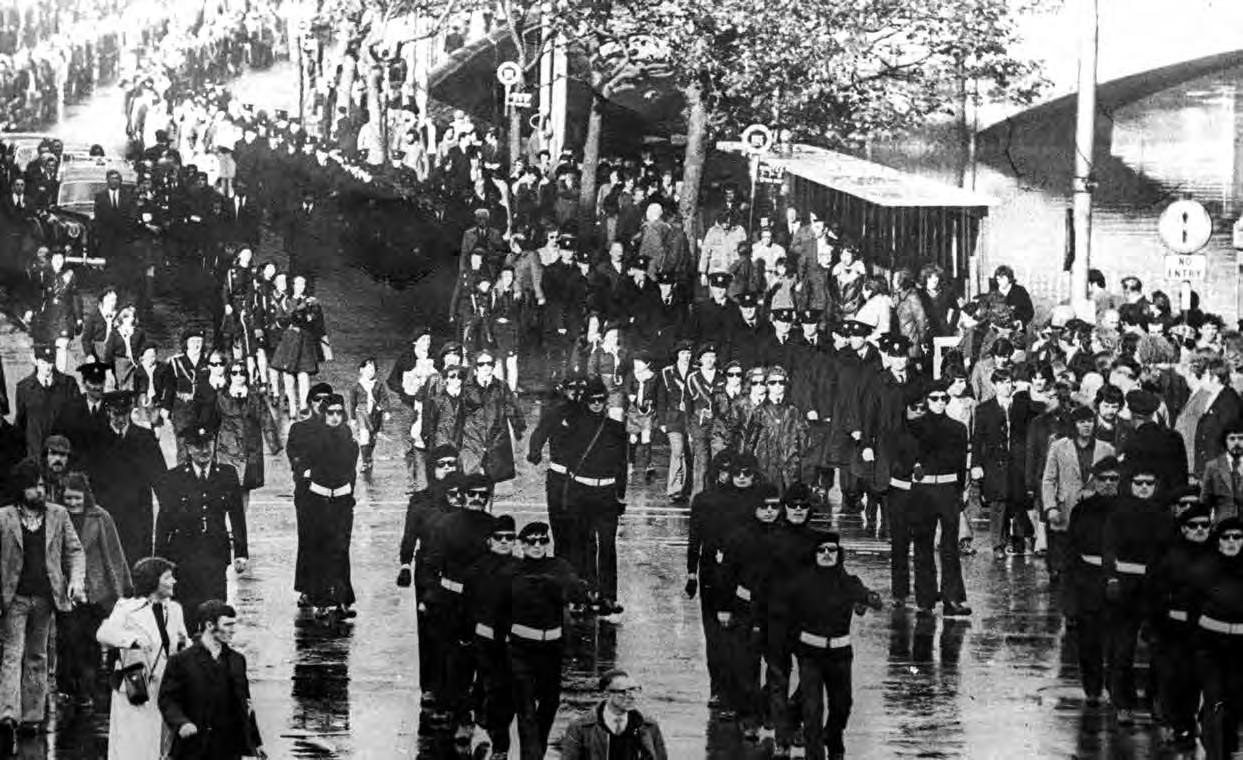
Gaughan protested for his rights as a political prisoner and resisted the harsh regime. He was held in Brixton, Wormwood Scrubs, Albany and Parkhurst prisons. In 1972 IRA prisoners in Belfast Prison, Crumlin Road, went on hunger strike for political status and won their demands. Those held as internees and sentenced prisoners in Long Kesh were essentially treated as political prisoners. However, IRA prisoners in England were held as criminals in high security units, subject to frequent punishment in solitary confinement. Inevitably this led to protests, including hunger strikes.
When hunger striking began as a form of political protest by women’s suffrage campaigners in Britain at the start of the 20th century, the British prison authorities resorted to the use of force feeding, an extremely brutal and traumatic practice. This was extended to Ireland in 1917 when Republican prisoners in Mountjoy went on hunger strike. It was force feeding which killed Thomas Ashe in Mountjoy in September 1917. After this, the British discontinued the use of force feeding in Ireland but in the 1970s it was again imposed on Irish prisoners in England.
Michael Gaughan, Frank Stagg and Paul Holmes began a hunger strike, demanding repatriation to a prison in the Six Counties, on 31 March 1974 in Albany. They were moved to Parkhurst where force feeding began. Michael Gaughan endured this until the night of 2 June when liquid from the feeding tube entered his lung and precipitated his death from pneumonia. He died on 3 June.
Michael Gaughan knew that he would die on the protest as there was no sign of concession from the British. But he was prepared to make the sacrifice for others. In his last message he said: “I die proudly for my country and in the hope that my death will be sufficient to obtain the demands of my comrades.”
From the testimony of family and comrades, and from his few last prison letters to his family, we can see the strength of Michael Gaughan’s character. Tragically, he
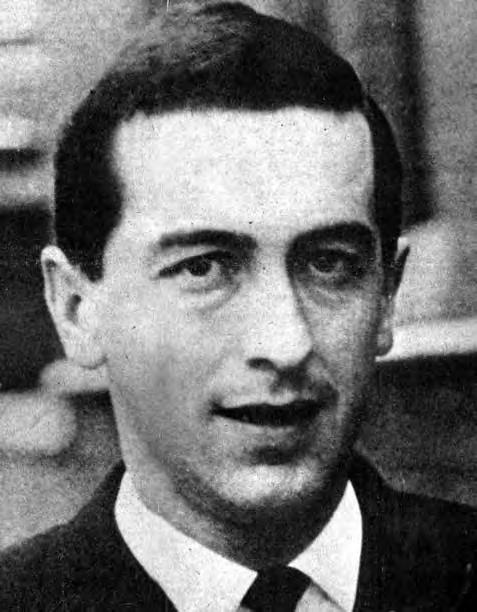
was not allowed to fulfil his potential, like so many of that generation, but his legacy endures. He wrote to his mother on 7 May 1974:
“The British hold my life and health in their hands, they may take both rather than give way to my just demand, but I will stand by what is just all the way”.
Mícheál Mac Donncha is a Dublin City Sinn Féin councillor
• 10 June 1974, Dublin. The funeral of Michael Gaughan as it passed through Dublin's City Centre
• Fellow Mayo man and hunger striker Volunteer Frank Stagg
TRANSF RMING BELFAST CITY HALL
Former Sinn Féin councillor TOM HARTLEY explains the long campaign to transform
Belfast City Hall into an institution that reflects all strands of Belfast’s political history.
In May 1993, I entered Belfast City Hall as a new Sinn Féin Councillor. Back then, the City Hall as an institution was dominated by political unionism. From its opening in 1906, unionist dominance and history were reflected in the City Hall’s political practice, its public art, its memorials, and its statues.
Unionist symbolism and memorabilia equated with unionist dominance. The history of Belfast’s nationalist and republican people was denied all forms of civic expression and recognition.
How was Sinn Féin as a party of change meant to confront this unionist dominance and, at the same time, transform City Hall as a space and an institution which reflects all strands of Belfast society, including unionist history?
We agreed that our task was not to deny unionist history. Instead, we sought to redefine how public art and memorabilia
The
history of Belfast’s nationalist and republican people was denied all forms of civic expression and recognition
should reflect the complex historical experience of all Belfast citizens. Our approach was to show the complexity and breadth of our Belfast narrative by introducing civic artwork that sat alongside unionist history.
One of our first successful initiatives was our proposal to install a Belfast City Council-commissioned stained-glass window in 1999, which remembered the Famine dead of Belfast. In 2004, Eoin Ó Broin, then a Sinn Féin councillor for North Belfast, proposed a Council-commissioned bust of Mary Anne McCracken.
This was followed in 2006 with another successful proposal; this time to install a Council-commissioned stained glass window commemorating the 1907 Dockers and Labourers strike in Belfast, led by Jim Larkin.
In time, stained-glass windows were commissioned to honour the women of Belfast, the Belfast soldiers of the International Brigade who fought and died in the Spanish Civil war, and the Celtic
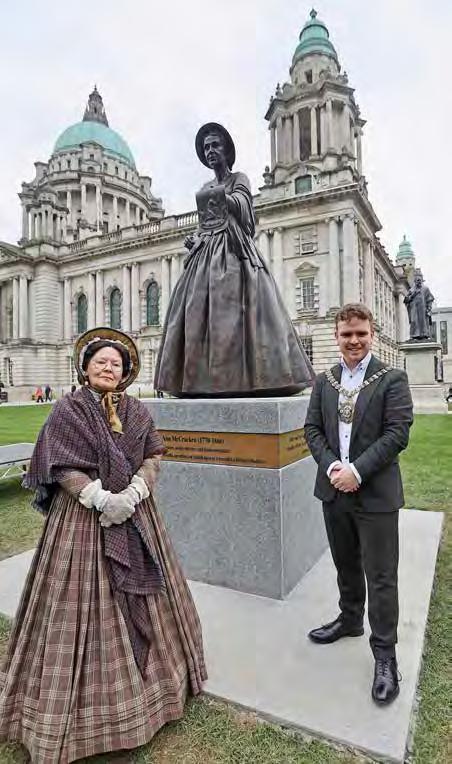


• Belfast Lord Mayor Ryan Murphy, with an actor in period dress who provided a renenactment, at the Mary Ann McCracken (inset) statue on International Women’s Day
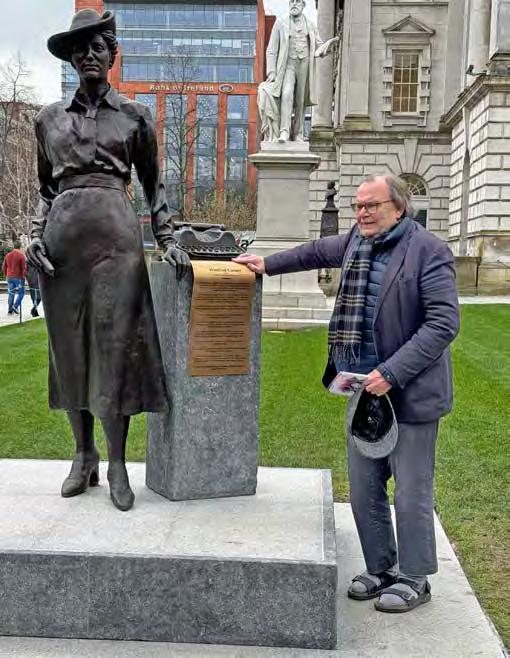
Myths and Legends window, its theme taken from the Cattle Raid of Cooley. This was the first window in the City Hall to have Irish text.
We also introduced change on a wider front. On 3 December 2012, Belfast City Council decided to limit the flying of the Union flag above the City Hall to 18 days.
In 2015, our approach to broaden Belfast’s historical experience was reflected in the launch of Ag FÍorú na Poblachta in the City Hall, with a civic dinner held in 2016 to commemorate the 1916 Rising.
Despite these successes, the corridors of the City Hall carried multiple artefacts that were overwhelmingly unionist. After a prolonged engagement with all parties represented on the Council, it was agreed that sixteen rooms in the City Hall would be allocated to showcase the historical narrative of Belfast.

while newer artifacts, which reflected the broader narrative of the city, were added.
The campaign to make the grounds of the City Hall more representative of Belfast’s complex history began in 2012. Ciarán Beattie, the Sinn Féin group leader on Belfast City Council, was successful in commissioning an equality impact assessment, which looked at the City Hall and its grounds.
One of the findings described the statues in the grounds as white, male, and AngloSaxon. Following the impact assessment, Ciarán proposed the commissioning of a statue of the Belfast republican and socialist Winfred Carney to be placed in the City Hall grounds.
Winifred Carney was a feminist socialist, suffragette, member of the Gaelic League, trade unionist, and a member of the Irish
The City Council has now recognised that all strata of Belfast life and history have a right to be seen and heard in our public spaces
Citizen Army and Cumann na mBan. She also had a deep interest in politics, art, and culture.
This proposal generated lots of debate across all parties on the Council. At one point, the DUP, Alliance, and the SDLP suggested that Winifred’s statue should be placed in another part of the city, and that a number of other statues should instead be located in the City Hall grounds.
Ciarán challenged this suggestion. He also sought legal advice. Within a year, the Alliance Party suggested that a statue of Mary Ann McCracken should be added to Ciaran’s proposal.
In 2017, many of the unionist artifacts were moved into these allocated rooms,

Mary Ann McCracken was a social reformer, an abolitionist and educator who campaigned for the rights of many. Born into a liberal Protestant family, she campaigned for the abolition of slavery and organised the relief and education of the poor. She was also the sister of the United Irishman Henry Joy McCracken who was hung in Belfast on 17 July 1798. Thus began a process of commissioning and designing the statues of these two wonderful Belfast women.
On International Women’s Day this year, the two statues were unveiled on the front lawn of the City Hall. In recognising the importance of these two dynamic women to the history of Belfast, the City Council has now recognised that all strata of Belfast life and history have a right to be seen and heard in our public spaces, and in the public discourse of who we are and where we come from, and in our hopes and aspirations for the future of our city.
Tom Hartley is an author, historian, and former Sinn Féin councillor
• Tom Hartley at the Winifred Carney statue outside Belfast City Hall
• Winifred Carney
Irish Unity TILL DEBT DO US PART TIME FOR IRISH UNITY
BY EMMA McARDLE
Periodically, articles appear and comments are made about what is glibly referred to as the ‘cost’ of Irish Unity. What usually follows is an attempt to reduce the reunification of Ireland and the long overdue restoration of the right of the people of Ireland to self-determination, to an accounting exercise.
‘Costs’ in this narrow narrative are financial, will the books balance? How many billions will it cost and who will pay? There is no importance or value attached to the emotional, psychological, social or democratic tolls which Partition levies on the people of Ireland.
Everyone in Ireland is negatively affected by Partition, regardless of political or religious affiliation or constitutional position. Partition has been so detrimental that it has prevented the nation realising its full potential for over a century.
This includes economic potential. Of course, the keen edge is felt in the North where the Executive lacks most of the necessary fiscal tools to properly manage the economy, but the North being held back means the whole country is being stymied.
The economic affect that reunification could have is obviously of huge importance
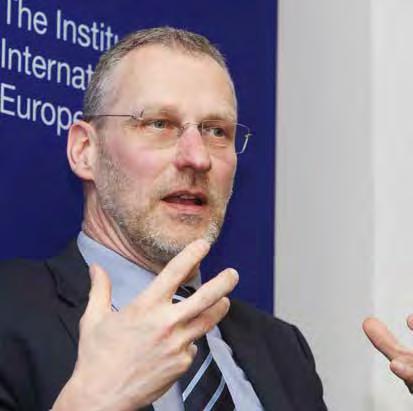
and research on this topic is both welcome and necessary. It is quite legitimate for people to be concerned about any change which might impact on their lives, whether you’re living from week to week or you’re comfortably off. Any potential worsening of your financial situation is naturally a cause for concern. Attempts to use economic scenarios of reunification to scare people off Irish Unity must be challenged.
The most recent offering in the ‘costs’ analysis side of a United Ireland comes from the Institute of International and European Affairs (IIEA), a body which proclaims itself “Ireland’s leading international affairs think tank ”. It was written by academics John FitzGerald and Edgar Morgenroth and is a flawed attempt at counting the costs of Partition by focusing on the scale of the British subvention in Ireland.
Their report was titled ‘Northern Ireland Subvention: Possible Unification Effects’. Media coverage on the release of the paper focused almost entirely on the claim that reunification would cost between €8 billion and €20 billion a year.
It’s interesting to note that a paper by the same authors, ‘The Northern Ireland Econ-
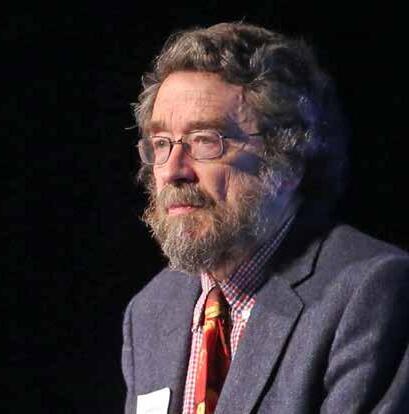
Northern Ireland Subvention Possible Unification Effects
John FitzGerald, TCD and Edgar Morgenroth, DCU
• Academics Edgar Morgenroth and John FitzGerald
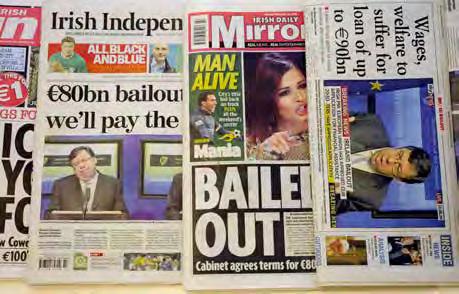
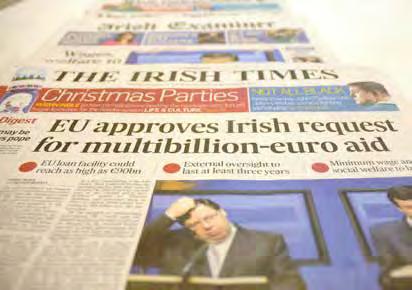
• The decision to bailout the banks and Troika bailout cost the Irish taxpayer €64 billion, with cuts which some communities never recovered
omy: Problems and Prospects’, released in 2019 and updated in 2020 stated the following, “While the Irish economy is much stronger today than in 1983, funding the Northern Ireland deficit would pose a massive challenge for Ireland. Based on the experience in dealing with the financial crisis in Ireland, to fund the necessary transfer would require a fiscal adjustment in Ireland amounting €20 billion to €30 billion.”
It appears that in four years FitzGerald and Morganroth have revised the ‘cost’ down by a potential €10 billion. Unfortunately, that that was not the headline which many news editors chose to run with.
In the current paper, the authors state that “Funding the needs of the people of Northern Ireland would put huge financial pressure on the people of Ireland, resulting in an immediate, major reduction in their living standards”.
This is a highly political statement . Surely it is the responsibility of the Irish Government which finally reunites our country to decide how new financial arrangements would be managed?
There is no importance or value attached to the emotional, psychological, social and democratic tolls which Partition levies on the people of Ireland
The report goes on to state that “It does not include any of the wider economic effects of Irish unification, effects which would themselves have major implications for the public finances in both parts of the island”. This admission renders the research questionable in terms of predic ting the economic impacts of unity.
Ironically, the biggest ‘major reduction’ in the living standards of people in Ireland in recent memory was due to the financial crash of 2008 and the subsequent decision by the Irish government to bail out the banks which put a huge hole in public spending.
At the time, John FitzGerald was working at the Economic and Social Research Institute. The ESRI’s ‘Medium-Term Review 2008-2015’, authored by FitzGerald among others, stated that the fundamentals of the economy were “sound”, and that “Our essential message in this Review is upbeat”.
By the end of September of the same year, the Fianna Fáil Government had transferred responsibility for its failure to regulate the avaricious and cavalier actions of the Irish banks to the Irish taxpayer through the bank bailout
Ultimately, the decision to pay the liabilities of the banks,
and the subsequent Troika bailout of 2010, cost the Irish taxpayer €64 billion and resulted in wholesale cuts to public services from which some communities have never recovered.
John FitzGerald stated to the Oireachtas Banking Inquiry in 2015 that the ESRI “did not draw the connection between the growth of a property market bubble and the risks to the financial system. In 2008 in our Medium-Term Review, we failed to foresee the impending financial collapse.”
Now is the time for serious analysis and research to be undertaken on the actual costs and benefits of building an island economy. This should be initiated by the Irish Government alongside a process of civic engagement on the future of shared economic potential.
We need to include all the costs of ending Partition including those borne by border communities now as a result of decades of economic stagnation caused by closed border roads, a failure to counter the east-west bias in economic development in the Six Counties, and an absence of a development strategy for the whole North-West region.
The benefits of a United Ireland also needed to be included in this research. It is to advantage of all to have an understand ing of the potential of a socially just island economy. It won’t be found in the approaches tak
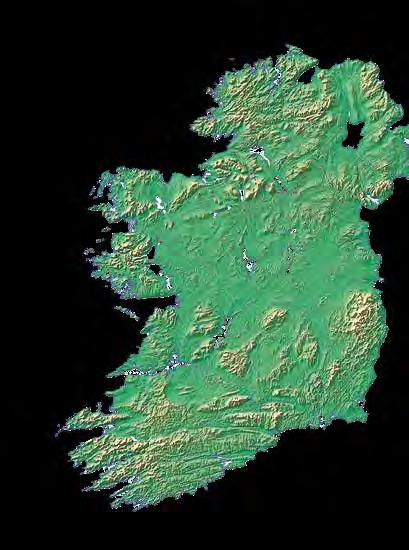

REMEMBERING VOLUNTEER JULIA MORRISSEY
The key involvement and contribution by many Irish women in the revolutionary period is being reclaimed. MAEVE ARBUCKLE profiles Cumann na mBan Commander Julia Morrissey
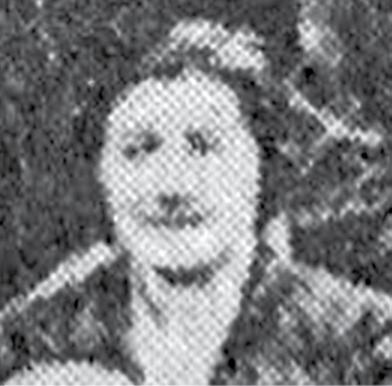
ALL REPUBLICANS WILL RECOGNISE THE ICONIC OPENING LINE OF THE 1916 PROCLAMATION.
“IRISHMEN AND IRISHWOMEN: In the name of God and of the dead generations from which she receives her old tradition of nationhood, Ireland, through us, summons her children to her flag and strikes for her freedom”.
Revolutionaries of the Rising were fighting in no uncertain terms for a republic based in gender equality. This was the banner under which Julia Morrissey, commander of the Galway branch of Cumann na mBan, led a group of 50 women during the Galway Rising in 1916 when she was just 24 years of age.
Morrissey was staunchly committed to her republican ideals and opposed the Treaty which partitioned the country. She was a close friend and comrade of Liam Mellows. Mellows lived for a time in Morrissey’s house in Athenry and it was from there that he was arrested in 1916.
However, the revolutionary rhetoric of gender-based equality espoused by the leaders of 1916 faded from the conversation as the status quo of Partition was institutionalised by the Free State and subsequent Governments.
Indeed, in the period following the Easter Rising, the contributions to the cause of freedom by many Irish women were kept in the shadows, and eventually fell out of the collective memory of the revolutionary period.
Julia Morrissey is one woman whose memory has been subjected to this indignity. And sadly in Morrissey’s case, it is not only her memory which suffered indignities.
She was devastated by the loss of her comrade Liam Mellows following his execution in 1922. Morrissey had no immediate family in Galway, and less than 20 years af-
ter she founded Galway Cumann na mBan, she had been committed to the asylum in Ballinasloe due to mental illhealth, where she lived out the rest of her days until her death in 1974.
Galway historian Dr Conor McNamara says, “Julia’s later life reflected a society in which the unwell, the unwanted and the unlucky frequently fell through the cracks”.
This would characterise the experience of many Irish women throughout the 20th century. Women’s freedoms were strictly policed with limited economic opportunities, lack of access to divorce, contraception and abortion, and the underlying threat of coercive confinement in institutions such as laundries and asylums.
We do not have a record of what Julia’s experience of life in Ballinasloe asylum was like, but we can speculate based on the stories that have come out of these psychiatric institutions since. In the middle of the 20th century, Ireland locked more of its citizens away in institutions than any other country per capita. Conditions were overcrowded and gruesome. Asylums hid people’s problems away from the rest of society, rather than actually treating them.
A single woman without family in the locality, Morrissey was in a vulnerable position and at the mercy of the asylum system. Records show that an application for a military pension was posted to her in Ballinasloe, but was not returned. It is not clear if Morrissey was not able


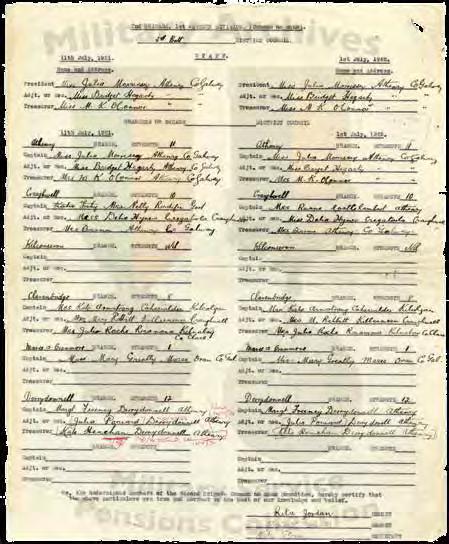
to complete the application herself, or if she, like Elizabeth O’Farrell, took a principled position to refuse the pension on the grounds that she did not recognise the State.
Not only are we limited in detail of Julia Morrissey’s life after being committed to the asylum, we also have very little focused research on her life as an active republican. Even in the collections of stories about Cumann na mBan in Galway that Galway County Council published in 2015, she is not featured prominently.
The revolutionary rhetoric of gender-based equality espoused by the leaders of 1916 faded from the conversation as the status quo of Partition was institutionalised by the Free State
Some of Julia Morrissey’s activities were described in two of the first-hand accounts given in the book and she is noted as the President of the 2nd Brigade, 1st Western Division of Cumann na mBan 3rd Battalion and the President of the Athenry Branch.
Morrissey is often mentioned only as a footnote to Liam Mellows as they were such close comrades. It’s clear that this is not a full representation of what she gave to the republican movement.
In the months and decades following 1916, women who were active in the rebellion were sidelined into more ‘acceptable’ roles in retellings of the Rising. Women have been remembered for their roles as caregivers, nurses,
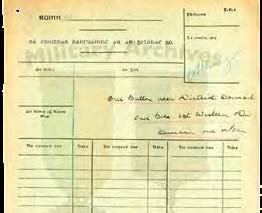
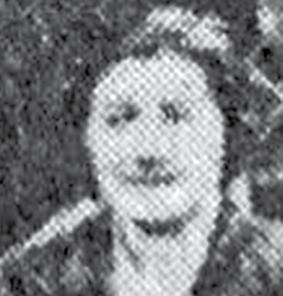
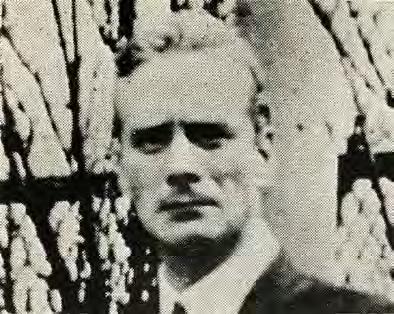
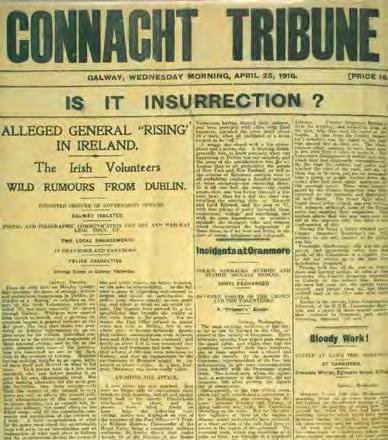
and assistants in republican activity, when they are remembered at all.
We do not have to continue to accept the marginalisation and stereotyping of women’s contributions to history.
In 2017, Julia Morrissey’s grave was properly marked with a plaque recognising the role she played in 1916. On the 50th anniversary of her death this past March, we gathered at her gravesite in Athenry to honour her memory and reflect on our own role in bringing about the type of republic that she fought for over a century ago: one based on the goals of the Proclamation, rooted in equality, regardless of gender or background.

Maeve Arbuckle is Cathaoirleach of the Joe Howley Sinn Féin Cumann in Oranmore, Galway
Co. Galway 7.14.
Liam Mellows (1892-1922) was born in England and reared by his grandparents in Co. Wexford. Socialist and radical in outlook, he joined Fianna Éireann and the IRB, and was a member of the provisional committee of the Irish Volunteers. He contributed greatly to the development of both Fianna Éireann and the Irish Volunteers in areas outside of the capital.
• Some of Julia Morrissey’s activities listed in the Military ArchivesMilitary Service Pensions Collection
• Liam Mellows
COMMUNITY G areGARDENS good for us all!
BY BERNADETTE COLGAN
I worked across from a Community Garden for years, but it wasn’t until I retired that I noticed it was there! That was five years ago when I popped in to see what was going on behind the green railings. One session later of weeding our potato plot and I was hooked.
Notice how I say ‘our potato plot’, because that is what happens. One gets such pride in growing and developing the various plots of onions, broad beans, beetroot, peas, garlic, and the fore mentioned potatoes that you take ownership as you watch the plants grow from seed.
Weeding is a necessary chore, but getting down and dirty whilst weeding helps you to forget your other life distractions for a few hours. Your head goes into a different space and then you are planning for the next set of tasks over the coming weeks.
Community gardens are a place where people from the entire social economic spectrum, irrespective of race, gender, religion or
Community gardens are a place where people from the entire social economic spectrum, irrespective of race, gender, religion or age hang out to learn from each other
age hang out to learn from each other. Once you are in that garden, regardless of your day job, you become one and the same with a common goal of being in the moment. It is a green area of refuge with enough space, often donated by the local council of derelict or waste ground, reclaimed by enthusiastic workers to bring it literally to fruition.
The gardeners share the work and during the growing season, the best bit of all, we share in the produce. This community amenity is then put to great use to serve the locality and the people of the area. It might take a season or two to break up the rough ground, dig out boulders, shift stones, and add fertiliser, in our case seaweed, before you see the rewards, but by golly then you know it has been worth the sweat and hard digging.
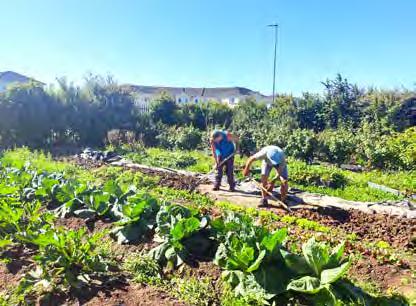
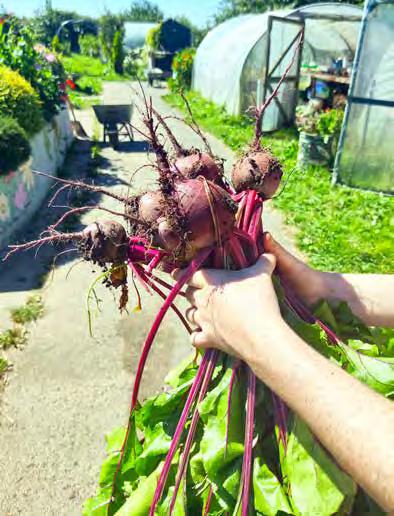
A community garden is a place where you meet like-minded people to learn how to grow fruit, vegetables, and herbs. We are all learning from each other and we are open to trying new crops. Sometimes it works and sometimes it doesn’t!
Last year, we planted what we thought were courgettes, but turned out to be pumpkins! One grew so large that we donated it to the local Library who used it for various occasions. It was used as a pumpkin for Halloween, a Grinch at Christmas, a Valentine heart and as a green monster for St. Patrick’s weekend. The bet is on to see if we can grow a bigger one this year!
Of course, there is more to the community garden than all this growing. Courses are run for participants on herb growing and their uses. Cooking courses, foraging, exploring other community gardens, making accessories for the garden, like bird feeders
• Ballybane beetroot. Every kilogram of vegetables grown reduces C02 emissions •
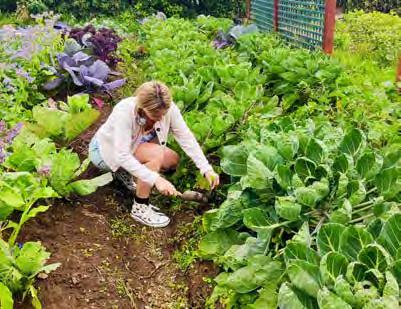
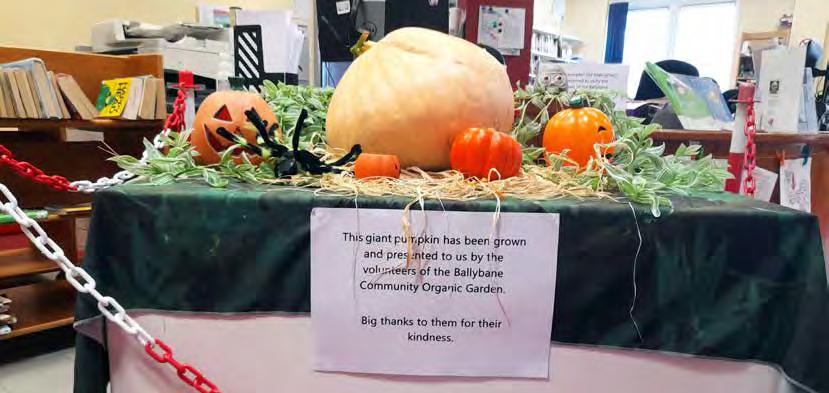
(entice the birds in and they will devour grubs, aphids, slugs, and snails) are some of the many educational and fun things to do to enhance the garden as well as ongoing education for participants.
These bird feeders, Christmas wreaths, plant supports and hanging baskets can all be made from the willow plants grown in the garden. A huge plus for the gardeners is that the ‘home’ grown produce is shared amongst the volunteers, so it is a win, win situation.
The social aspect of any community garden is also very important. Sitting around a bench, sharing tea and biscuits, sometimes a pumpkin cake spread with homemade jam from the gooseberries or strawberries that have grown in the garden, with fellow gardeners and having the chit chat is great fun and supports us all.
This green space is a positive for local communities. It was a safe place to venture during Covid as it was easy to stay two metres
Last year we planted what we thought were courgettes but turned out to be pumpkins!
apart from each other and be able to talk to someone else outside the home. It is a place for organised school trips so children see that vegetables and fruit don’t grow in a bag on a shelf in the shop. They can participate in growing their own seeds, sunflowers being a popular choice.
Visitors on open days learn about the nutritional benefits of the produce that comes from a soil that has been nurtured with seaweed and homemade compost from organic waste of the previous year’s weeds and vegetable cuttings.
Community gardens lead to community development. Volunteers are in the open air with weekly tasks. A person soon discovers their strength and capabilities in working in the garden. I particularly like weeding! There is great pleasure standing back and seeing your plot clear of weeds and the plants growing freely. There is a great sense of achievement. I am only coming to the end of my garlic hoard from last June.
The national organisation for community gardens has been in existence since 2011 and is growing. They support and promote community gardening in Ireland and the North of Ireland. The evidence-based benefits from the gardens are many, from the proven physical, mental health and wellbeing benefits to
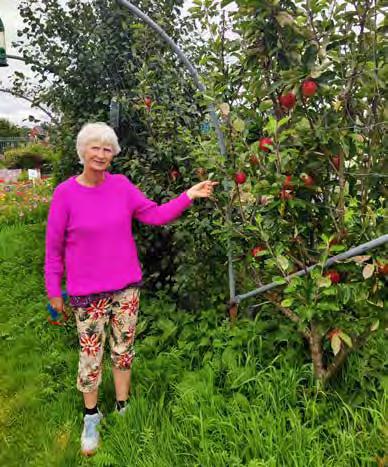
educational, environmental bio diversity and cultural gains.
It is a place for all nationalities to mix and learn from each other. It can contribute to reducing anti-social behaviour and therefore making communities safer. They reduce CO2 emissions with estimates of between 2kg and a 5kg reduction for every kilogram of vegetables produced.
So now that you have read this, maybe you would like to get involved? It is easy. You will find your local Community Garden through your Local Council by asking them for a contact person’s information.
Bernadette Colgan is a committed weeding enthusiast!
• Bernadette Colgan
• The famous Ballybane Garden Pumpkin

DENZIL McDANIEL THE CHALLENGE OF MOVING FORWARD INTO A NEW IRELAND
Ihave a friend who grew up in an all-Protestant estate in Enniskillen and attended school with only children of his own religion. His family were evangelical Christians and staunchly Unionist.
He now identifies as Irish and supports reunification; he wants “a new Ireland that’s not just about Northern Ireland being enveloped into a southern Ireland”.
Speaking about his journey, he said, “You find yourself being seen as a Lundy within your own community, and while not viewed with animosity by Nationalists, you’re not part of the other. You don’t leave one community to become part of another community.”
The man’s comments reflect how years of Partition produced a society that is deeply tribal. His upbringing where Protestants and Catholics lived apart in their own social housing areas and being educated separately is typical of the majority of areas in the North. There’s widespread segregation, and segregation begets sectarianism.
Partition didn’t just split the island geographically, it embedded division which has seen the cancer of sectarianism and bigotry grow. Breaking down the physical barriers, increasing human contact and respecting all communities is crucial to reconciliation in building a new Ireland of inclusion and equality.
Sinn Fein’s policy of ‘Ending Sectarian Segregation’ is a key objective towards that. The document contains many laudable aims, notably on housing, education and building shared communities. At the recent launch in Belfast, I spoke as a Protestant growing up in a divided society in Enniskillen.
It’s a town in which the traditional two sides have more contact than most in the north, despite each side having their own housing estates and schools.
Its large municipal cemetery called Breandrum has a wide path running right through the middle with the Protestant
Partition didn’t just split the island geographically, it embedded division which has seen the cancer of sectarianism and bigotry grow
graves on one side and the Catholic graves on the other. Even in the same cemetery, people who were divided in life are divided in death.
The children of the farming community near the Border may travel on the same school bus, but the Catholics kids largely stick together as do the Protestants. And in small towns like Lisnaskea, the two communities went to their own side’s chemist shop, newsagent, and so on.
The conflict in the Border area saw, literally, a war between people of different religion despite knowing their respective neighbours well.
In the circumstances of the conflict, people retreated into their own silos. Human nature means people look for the safety and certainty of associating with ‘their own’.
Indeed, the aim of Sinn Fein’s document in reaching out to those of Protestant, British or Unionist identities will face challenges because there are people within those communities who do
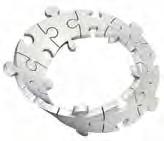
not want to listen.
But things are changing, especially among our modern, impressive younger people whose priorities and values are different to previous generations.
Even older people in the Protestant communities were unsettled by Brexit and are wondering about the future. They need reassurance that there is a place for their culture and identity in a new Ireland, whatever shape that will take.
Many other barriers are being broken down. I was intrigued to hear of a Church of Ireland community in County Cavan where there are only 30 families, but recently when they raised €300,000 for a church development, 85% of it was raised by their Catholic neighbours.
Aside from the old binary divide, the island has seen increasing diversity. In Clones, County Monaghan, it’s estimated that more than one-third of the town’s population is from ‘other’ communities, including Syrians, Brazilians, Polish, East Timorese, Romanians, and others.
All over the island, there are numerous nationalities who have made Ireland their home and continue to make positive contributions to society.
So, there has already been massive social and demographic change. But further change is needed in hearts and minds, North and South, in order to build trust and relationships if we are to achieve a truly pluralist Ireland where increasing diverse groups and interests can full play a part in a potentially exciting future.
It will not be easy. There is a saying that “Long after the quarrel stopped making any sense, the memory of the grudge endures”. The conflict is over, but moving forward into a new Ireland for all means moving past the grudge whereby all sides are welcome.
Denzil McDaniel is a journalist and former editor of The Impartial Reporter

The front page of An Phoblacht describing the funeral of Michael Gaughan from Albany Prison via London and Dublin to his native Ballina, Co. Mayo. –
